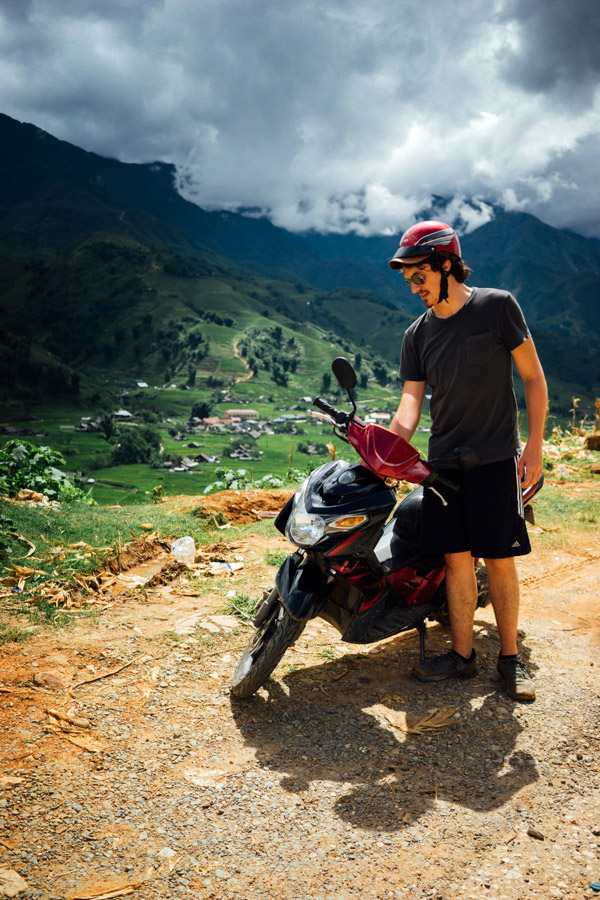Yann Tiersen - A Quai
It was a difficult choice between Sapa and Halong Bay, but we opted for what fit us best - far from crowded boats, polluted waters, and sometimes disappointed experiences. Sapa it was, the mountain town in Northern Vietnam, home to H’Mong and Red Dao minorities.
We arrive aboard a sleeper bus after 4 hours of winding roads with magnificent views, or so we are told. We only see a white blanket of fog, which colors our first 24 hours in town. But we do like it here - it feels familiar. The climate is cool and the fog is thick. It’s August, the coldest time in San Francisco, and Sapa treats us with the City’s weather. The small hillside city is quaint yet has enough tourists to attract (too many) Italian restaurants; the main street is lined with ladies and their local crafts, and shops selling low-price North Face gear. We negotiate poorly for two waterproof jackets, preparing ourselves for the next few days.
Our first morning we find Sapa O’Chau, a non-profit organization offering local communities an alternative path from difficult farm life by providing education in English and tourism, helping artisans sell their crafts, and even employing them as guides or hosts for their many treks. Wanting to help in any way we could, we try helplessly to convince the manager to give us something to do, to let us volunteer. But a week is too short, students get attached, and hosting volunteers takes much more effort than we imagined. Instead, we help by being conscientious tourists: we order a second coffee and opt for a two-day trek, with a night at a homestay promising a short course in herbal medicine and a bath.
Sapa is surrounded by minority villages of the H’Mong and Red Dao people, two of the most prominent of the region. These minorities are ethnic groups originating from the area and not yet accustomed to modern life. They are often too poor to afford the things we take for granted, like electricity, clothes, or education. They live in small communities (read: tiny) spread throughout the countryside - we had our first experience with them between Da Lat and Nha Trang with the Easy Riders uncles. Now we get to live with them for one night.
It’s 9am and we meet our guide, the shy and young Pế. While trekking out of town we are followed by a lady insistently selling textiles, her voice filling the awkward yet understandable silence that occurs when people with a language barrier come together. But in time, all three of us open up, and Pế’s candid, sweet interest in our life is touching - “No babies yet?”. We slowly discover more about him and his H’Mong village nearby; we learn he has been learning English for only six months at Sapa O’Chau, walking miles to get to town for classes. He wants to be a full-time trek guide and keep perfecting his already unbelievable English. During the first half of our day, Pế will stop many times, chatting and laughing with locals and offering invitations - his younger brother is getting married in two days. Soon the seldom silences are the comfortable ones you can only have with a close friend.
Pế shows us his country, takes us along winding mud roads and across vast farmlands, tells us about hemp and how to cultivate and treat it, asks us about whether we’ve ever tried smoking it, puzzled by why we’re not using it for clothing. We pass small villages nestled in vibrant fields of green, barely a few houses, with roaming chickens, pigs, and water buffalos. There’s an elementary school, a small old crooked building with corrugated metal walls. I think of Worldreader and hope they’ll be here soon. We keep going, cross ruined bridges and step over gaping holes, falling silent to the scenery in front of us, the dramatic landscape of rice terraces, hills, and valleys of Sapa. Everything the fog was hiding from us a few hours before. We got lucky with the weather, as a couple days before Typhoon Nida was hitting the area, causing a large, fatal landslide blocking the way up. Now we’re in this painting after the storm, with large clouds overlooking our trek.
A warm lunch of local food and we’re off again for another 10km in the fields. The kids we pass are many, often curious and smiling. Madie has a knack for getting them to smile and laugh. We explore a small cave, ford a river and turn our hands blue with indigo herb.
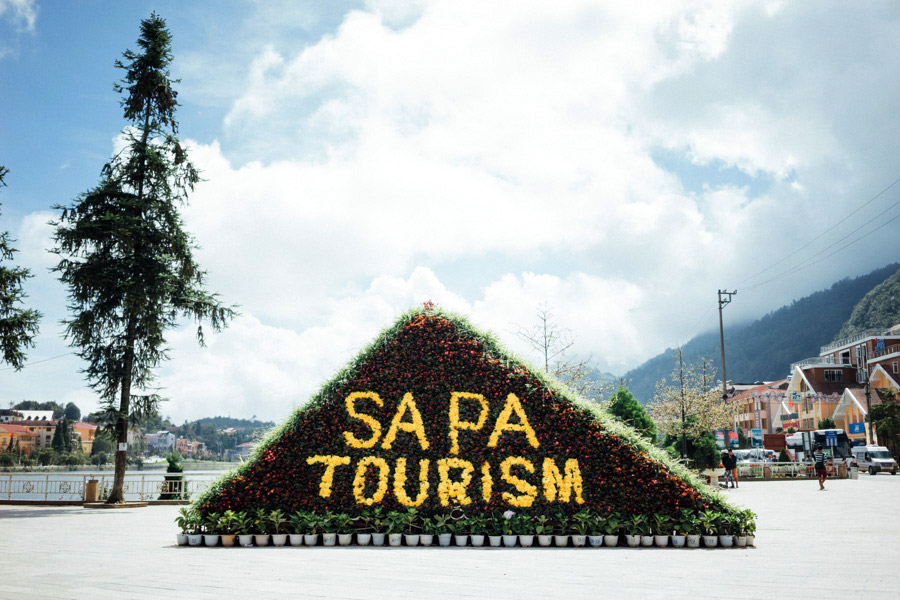
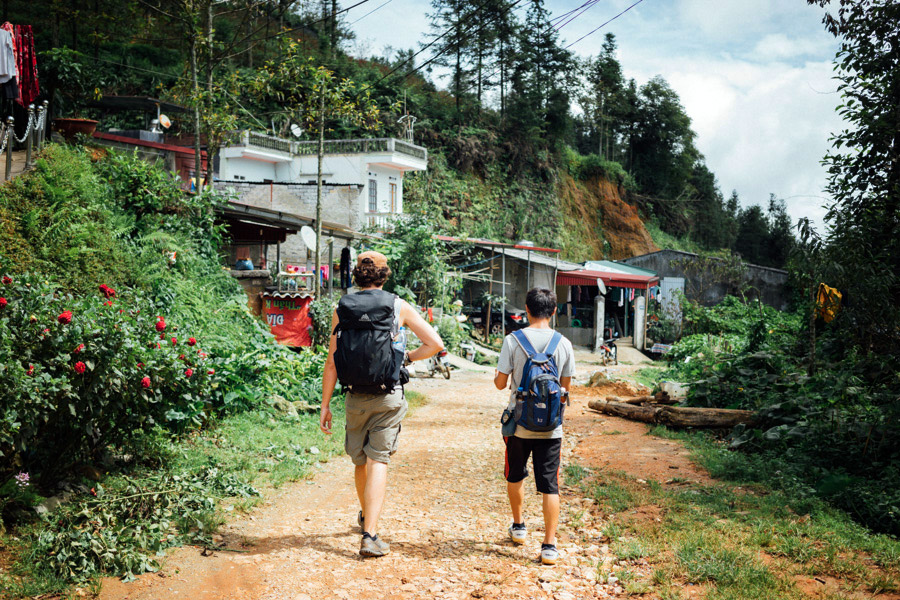
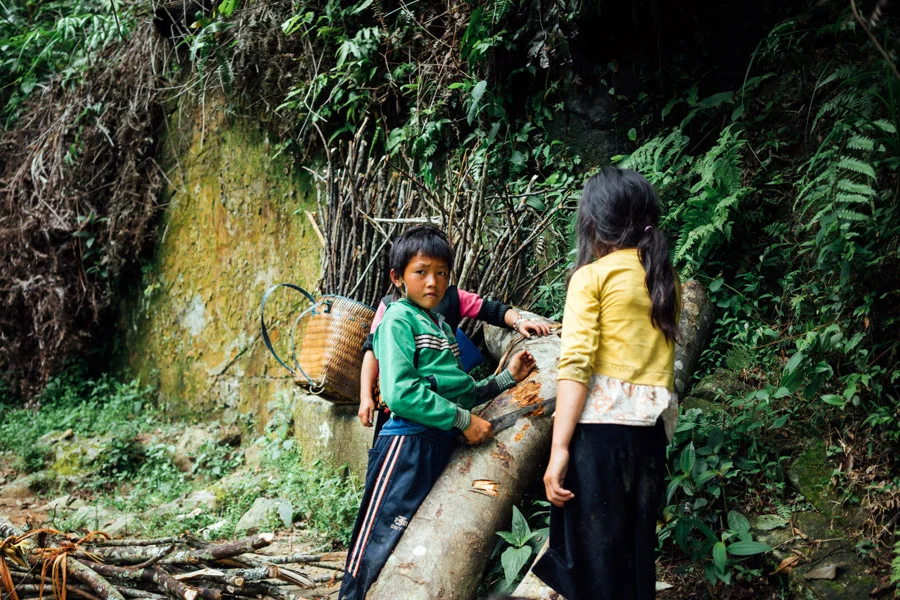

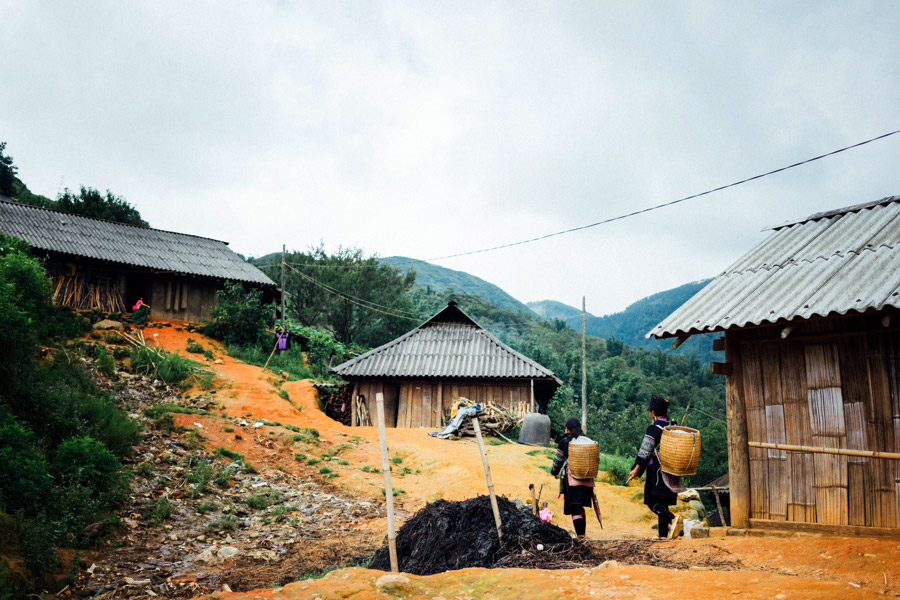

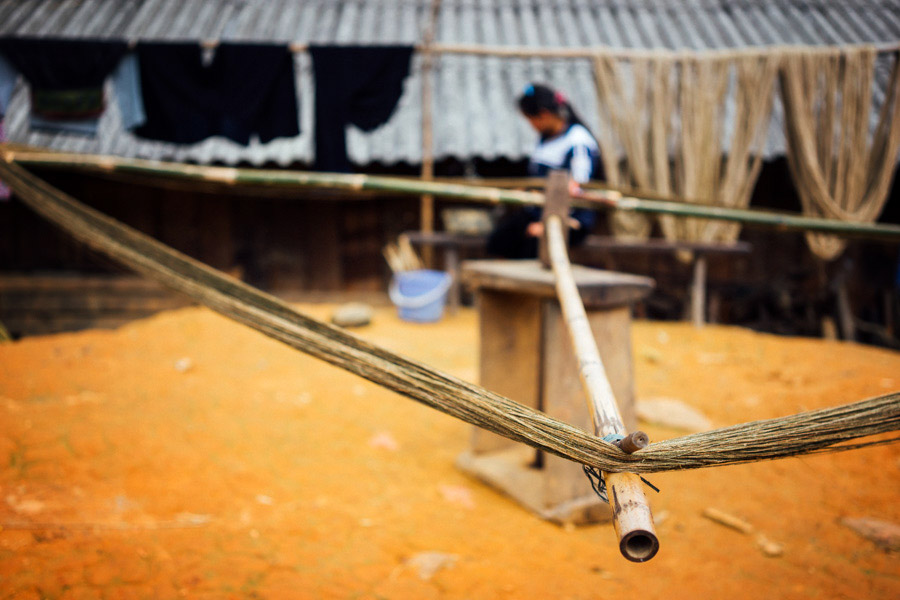
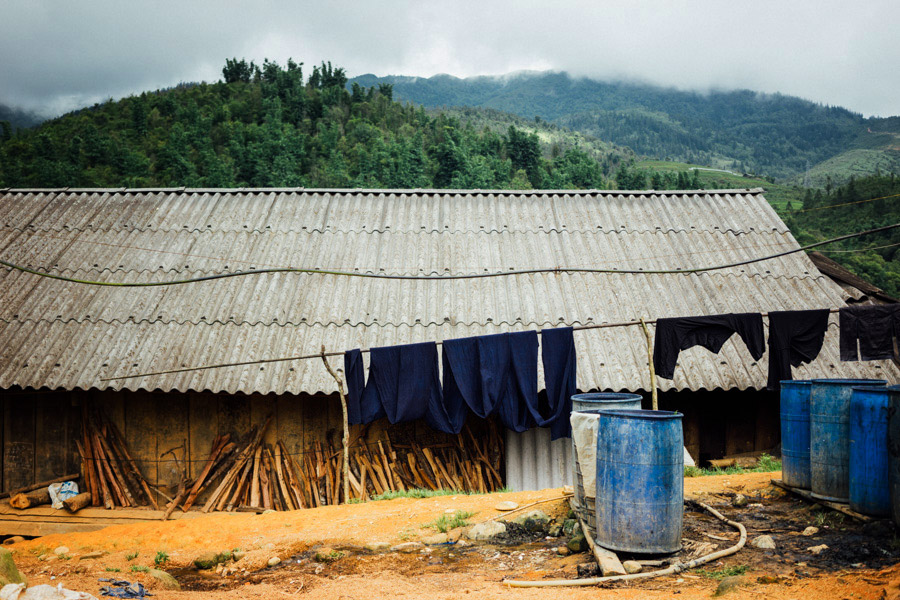
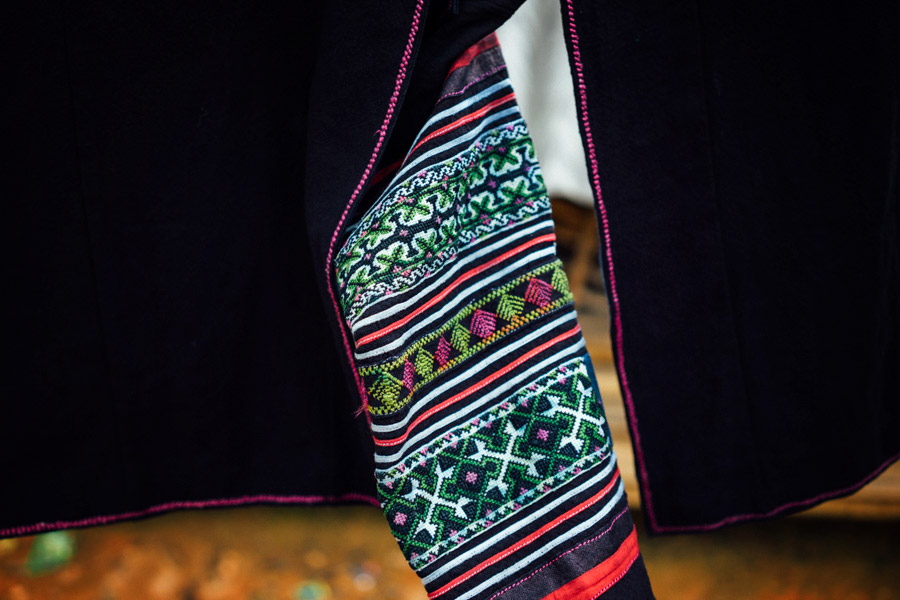
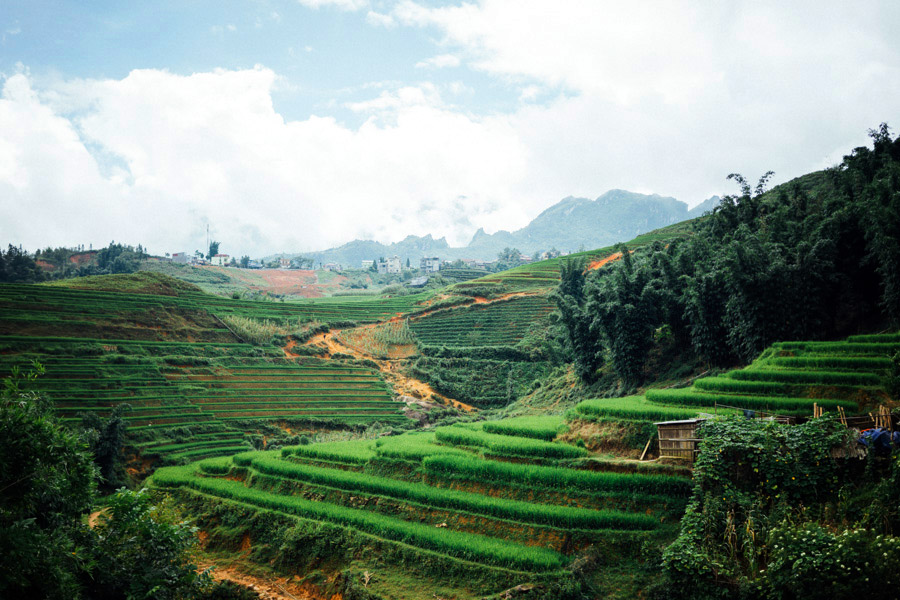
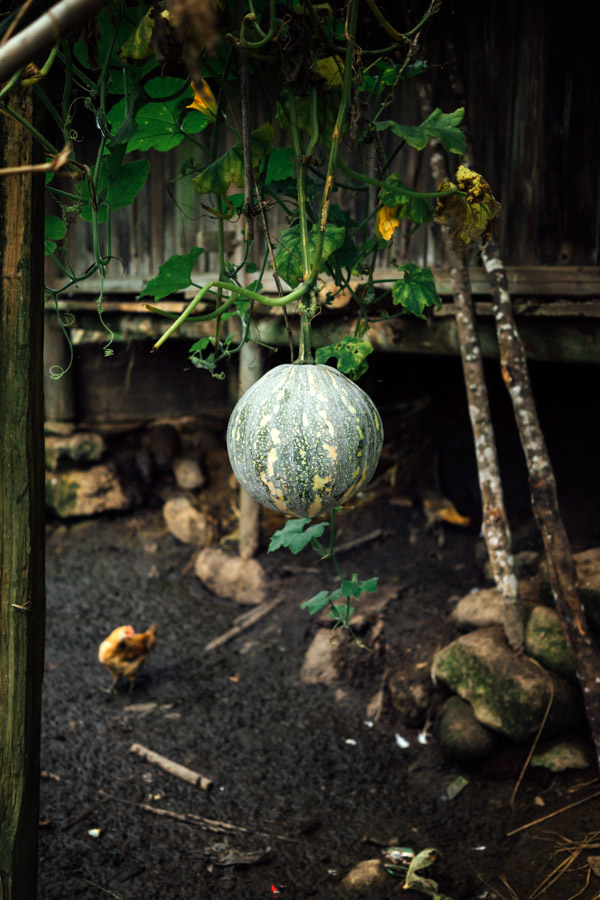
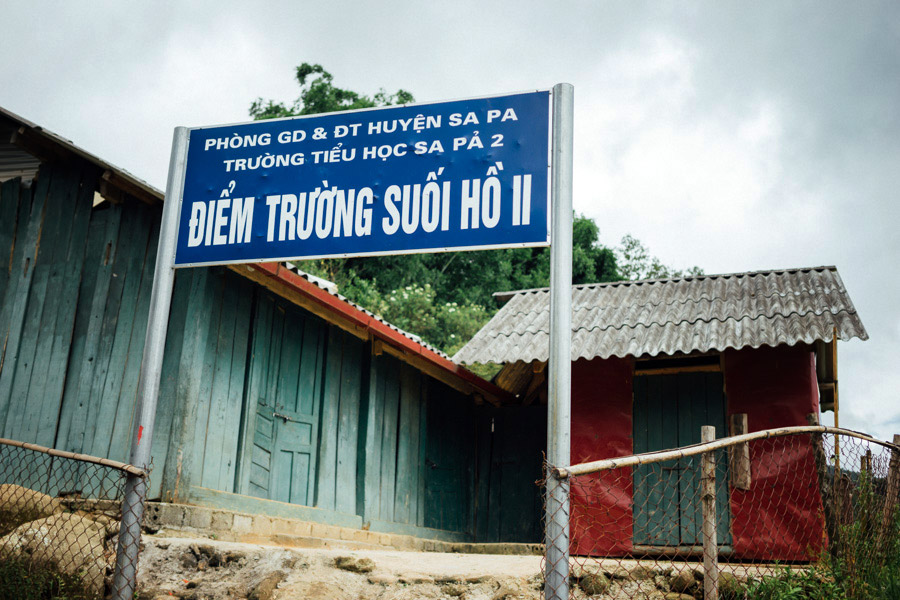
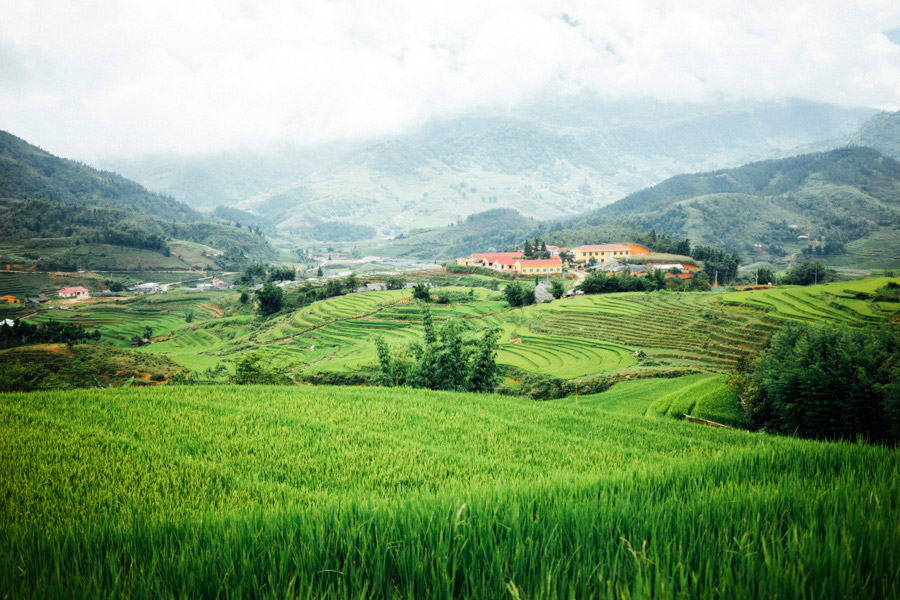

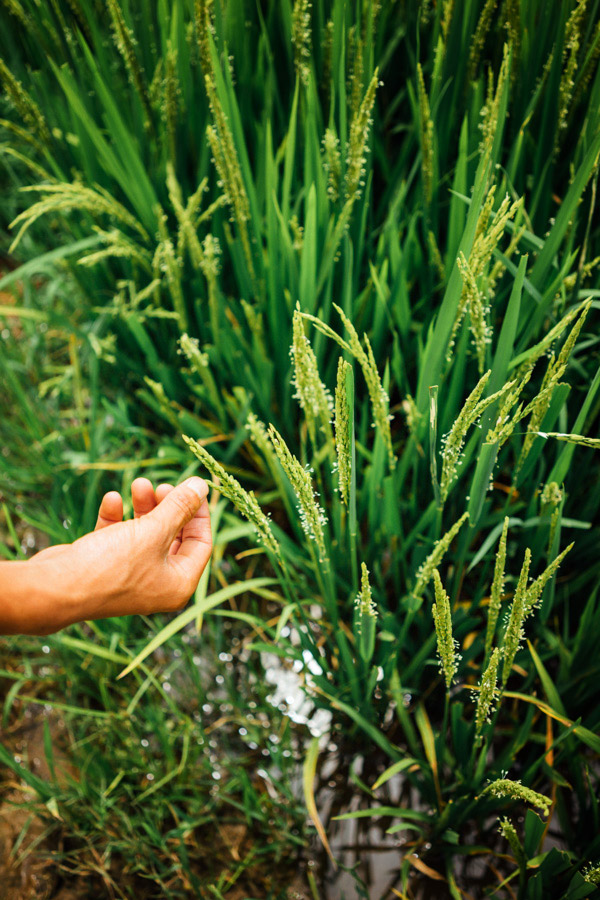
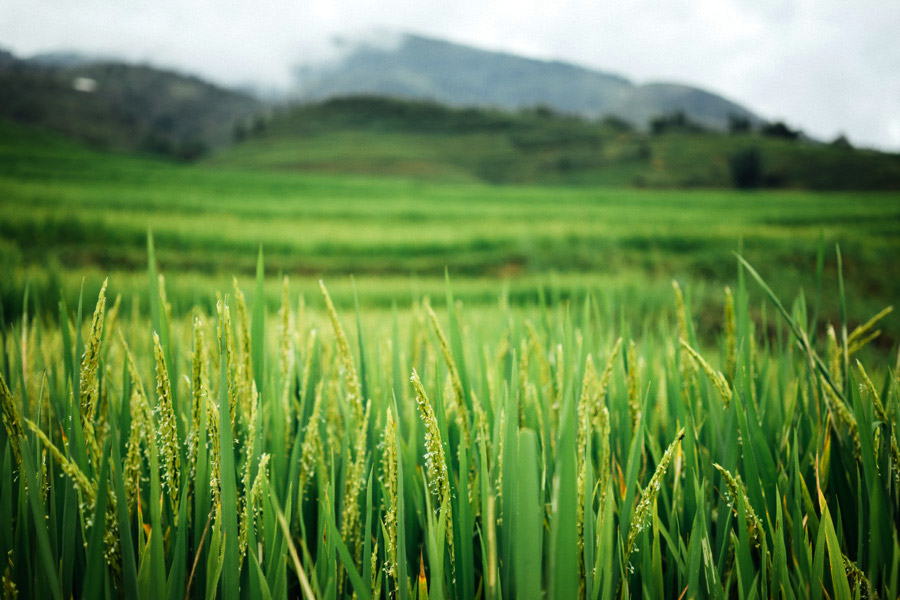
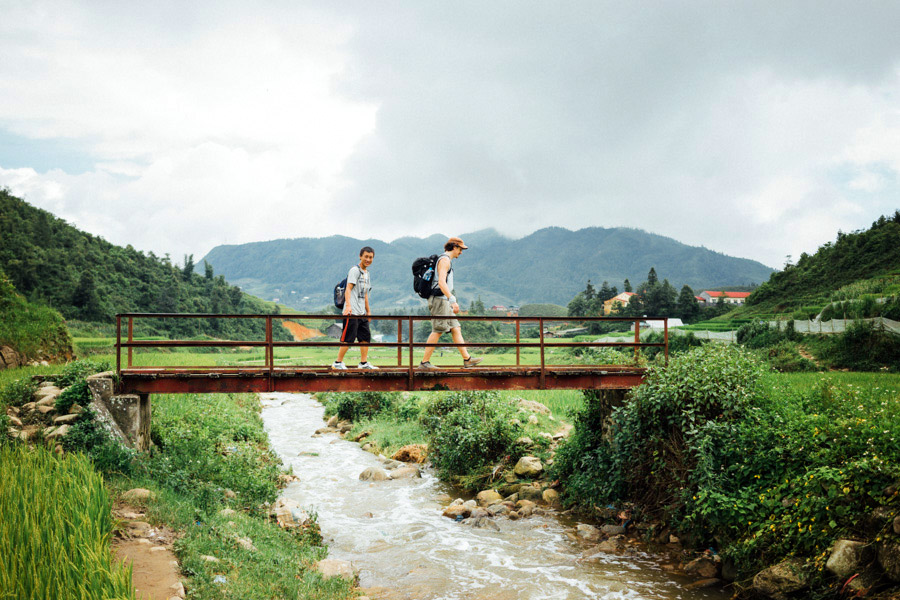


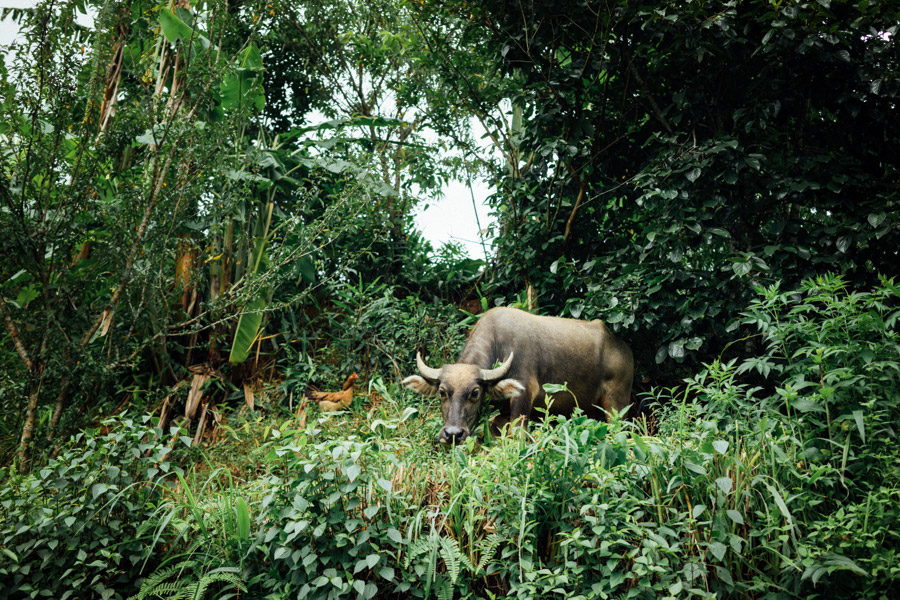
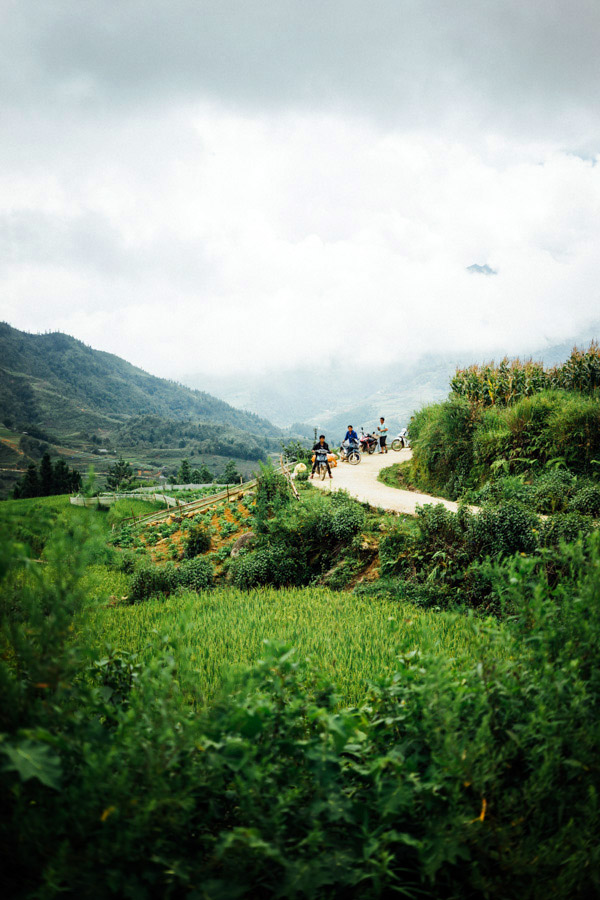
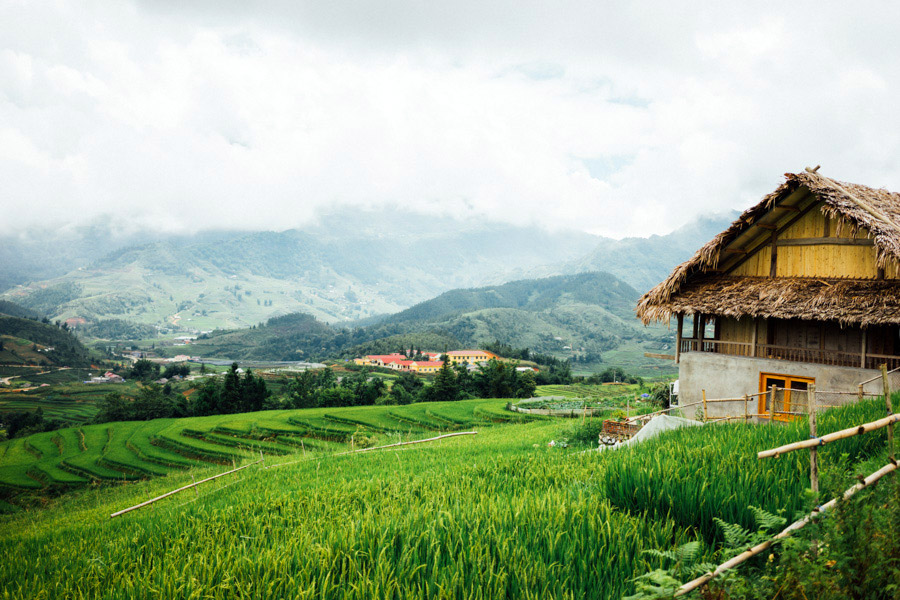
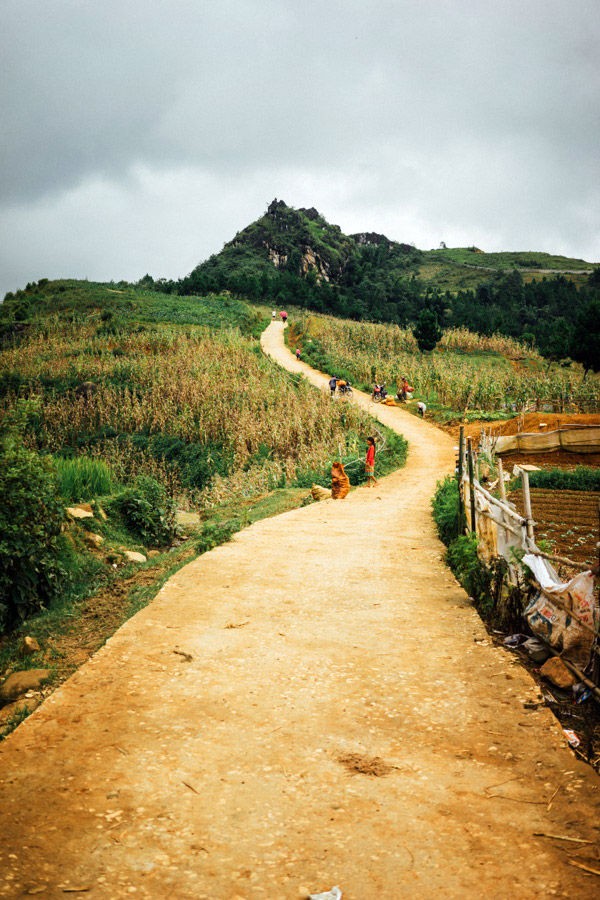
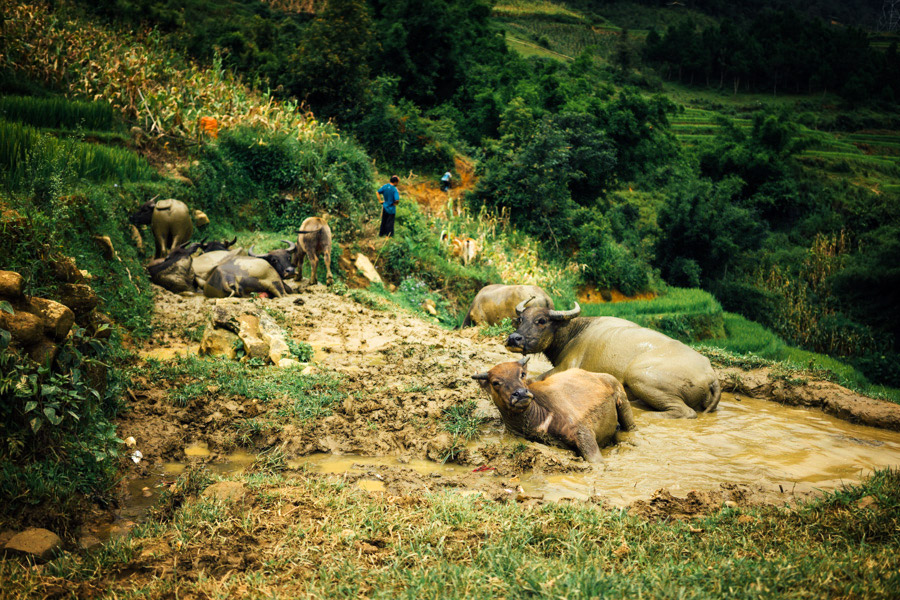

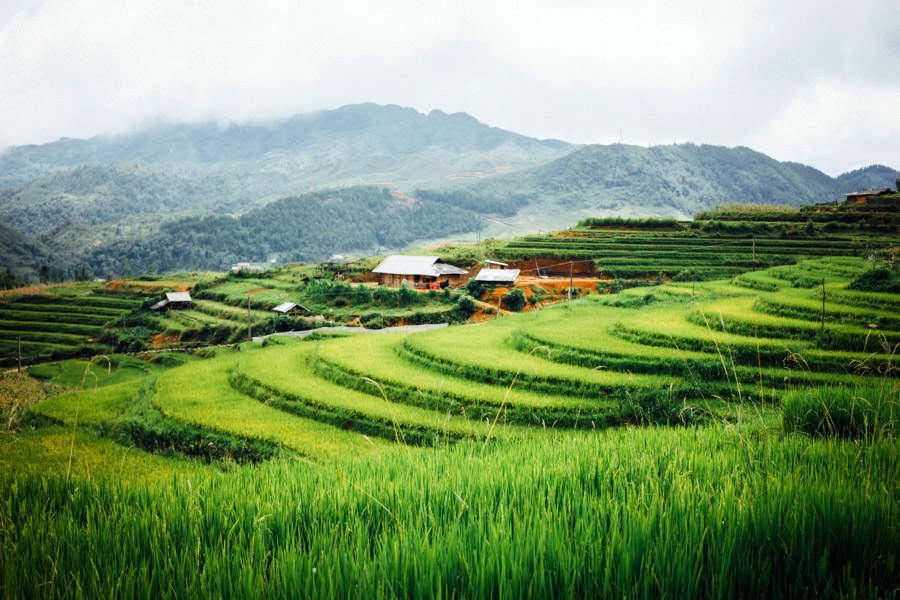

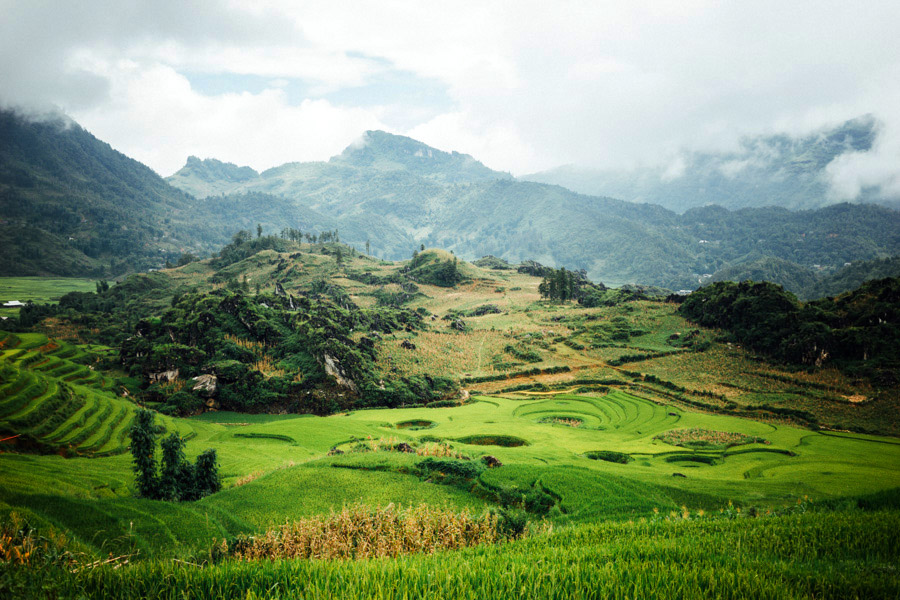
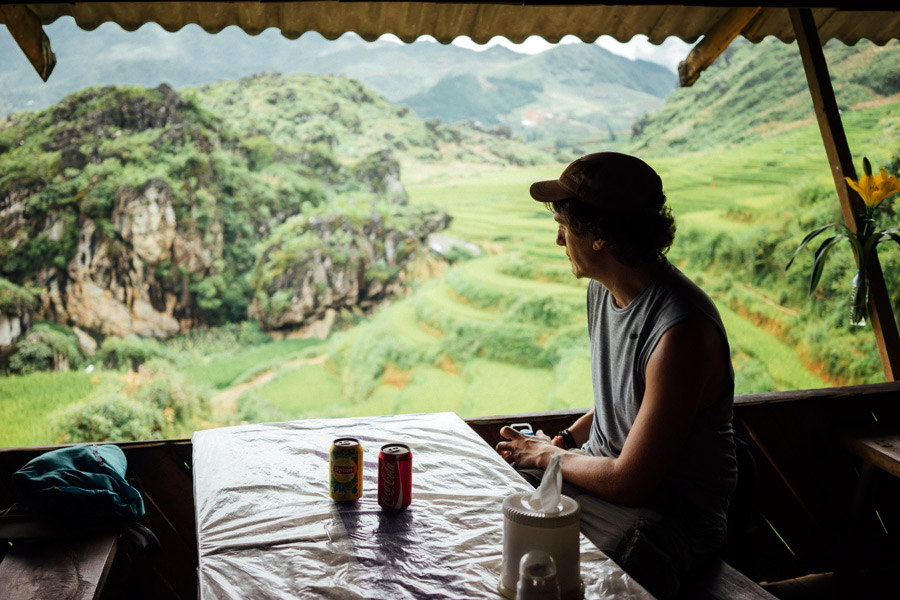
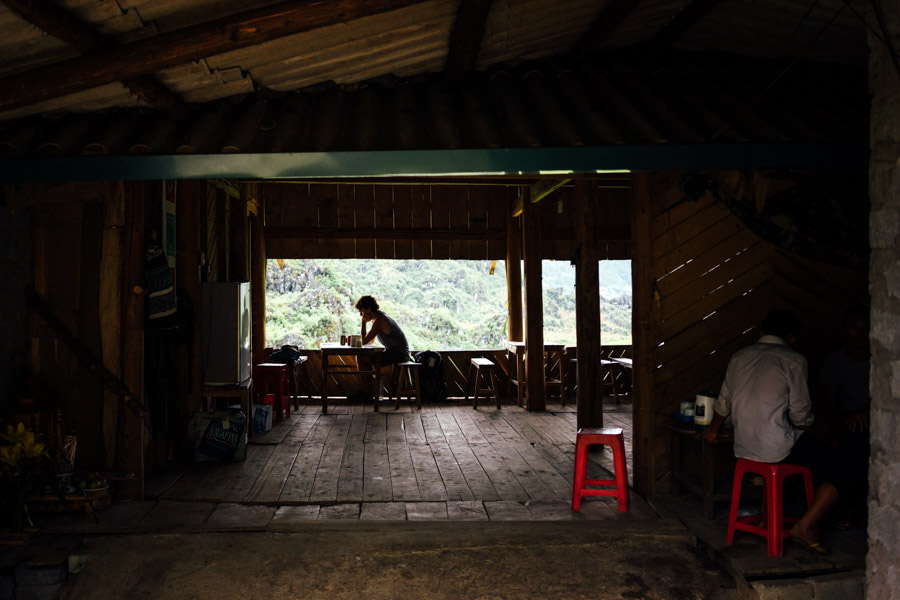
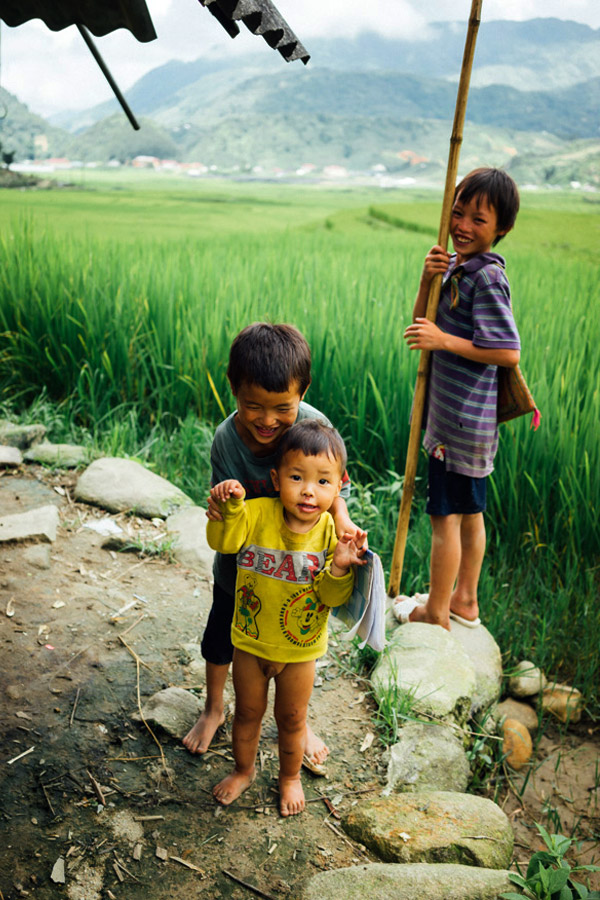
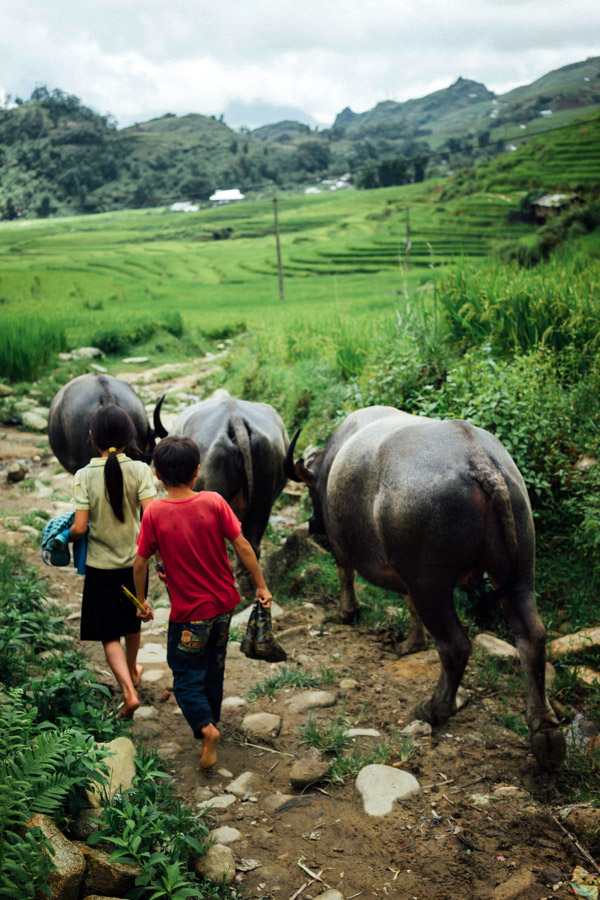
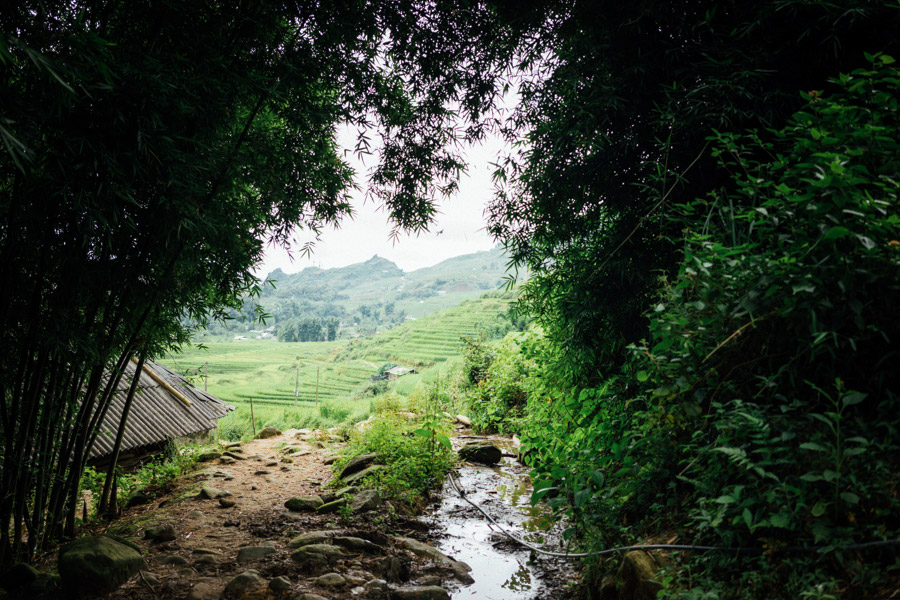
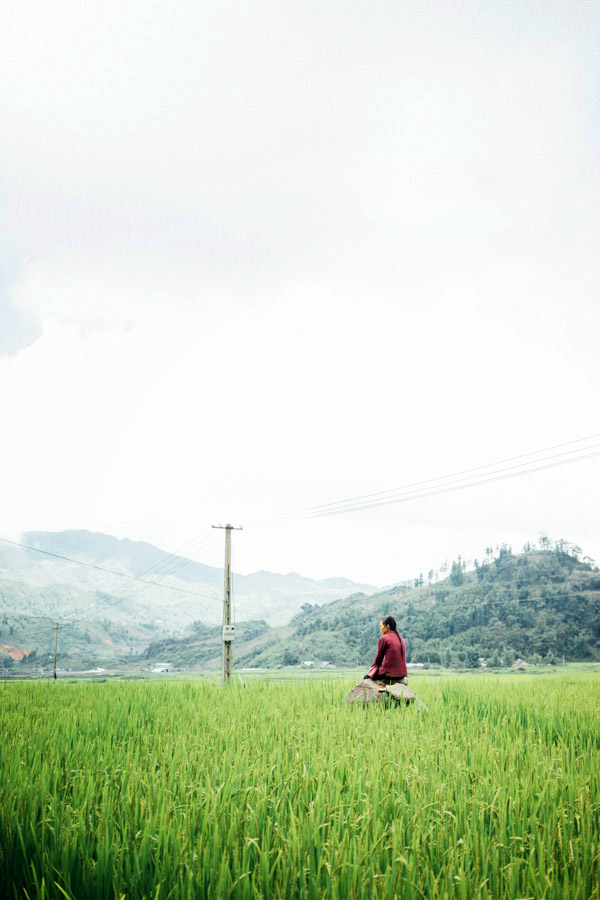
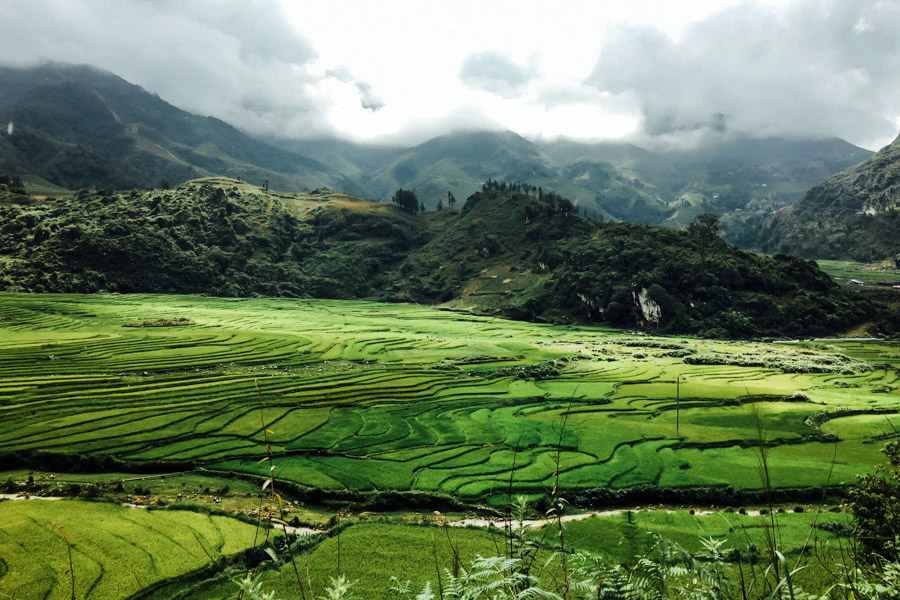
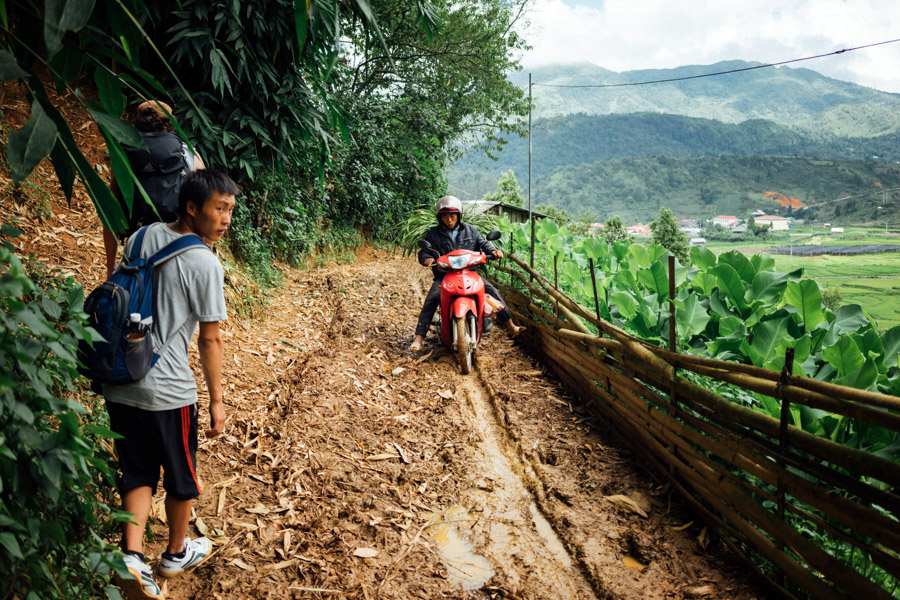

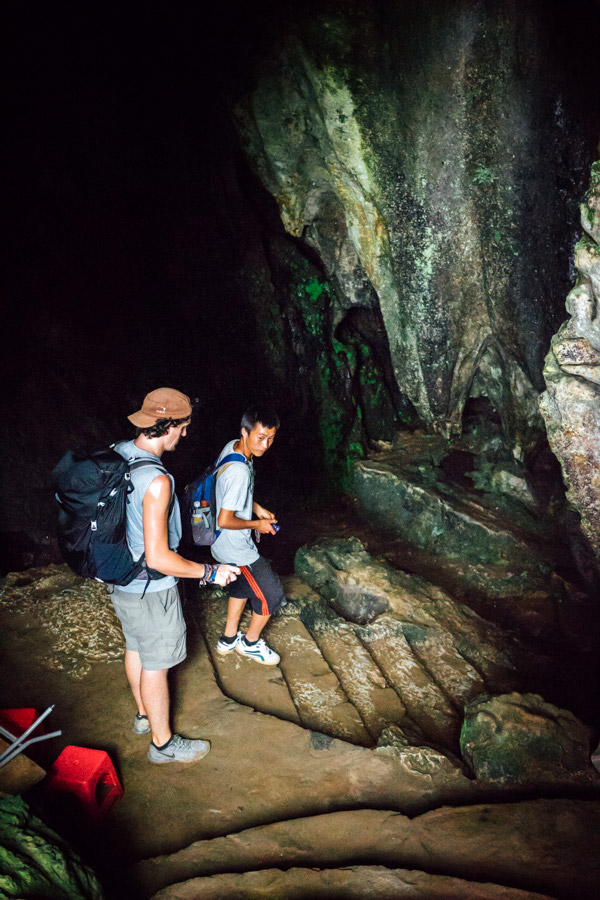
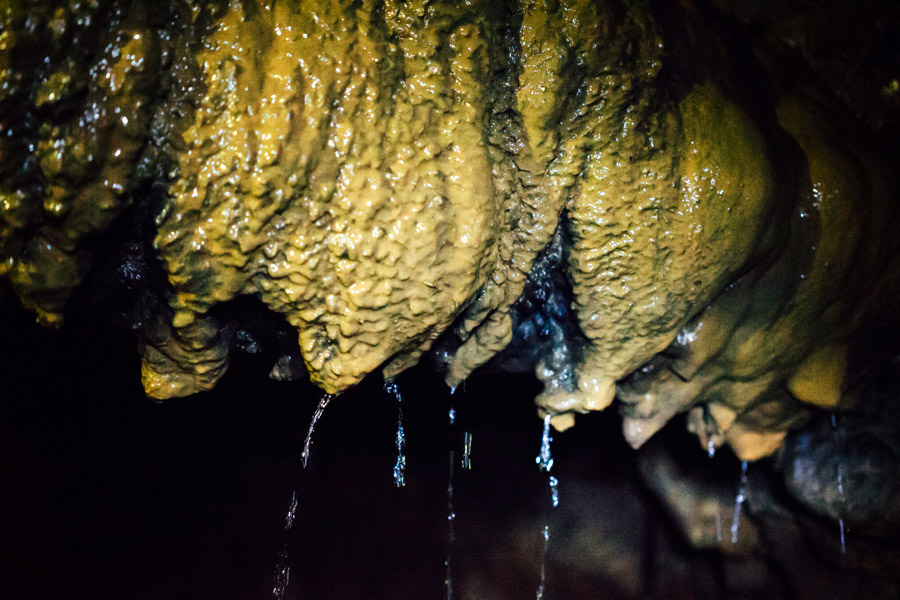
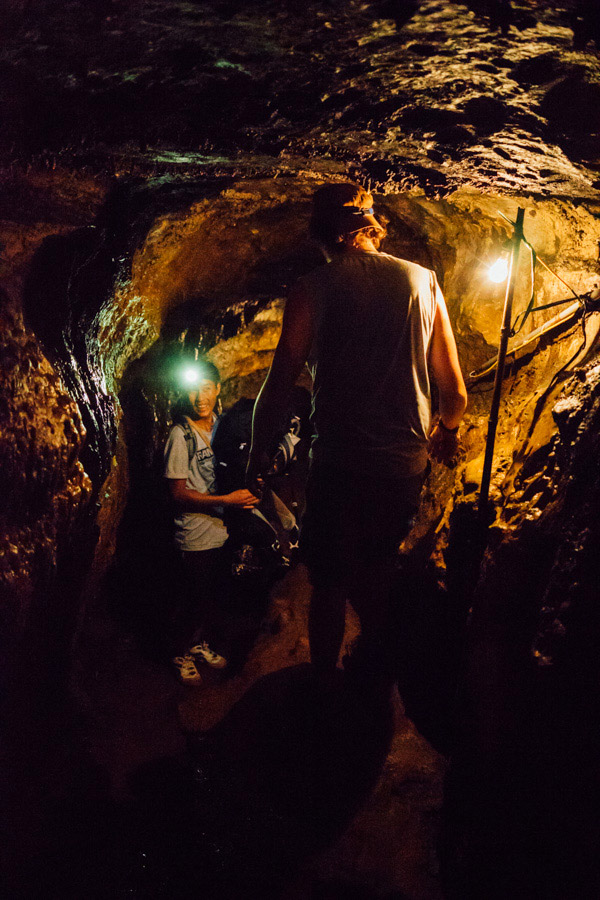
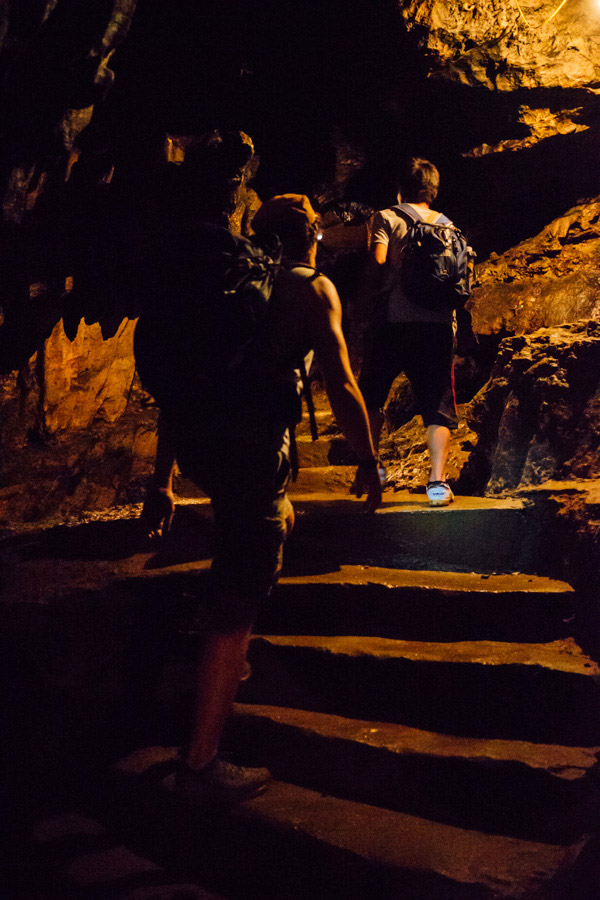
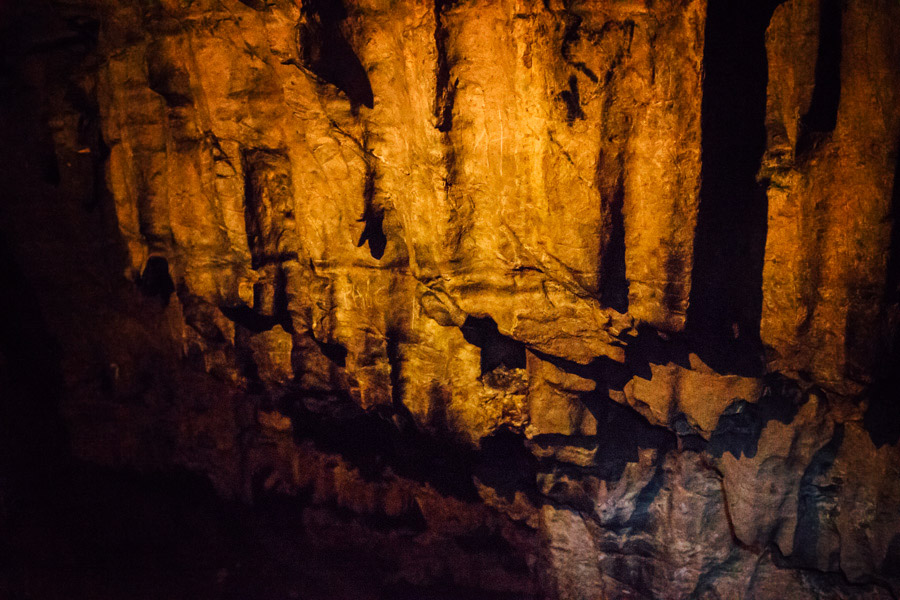
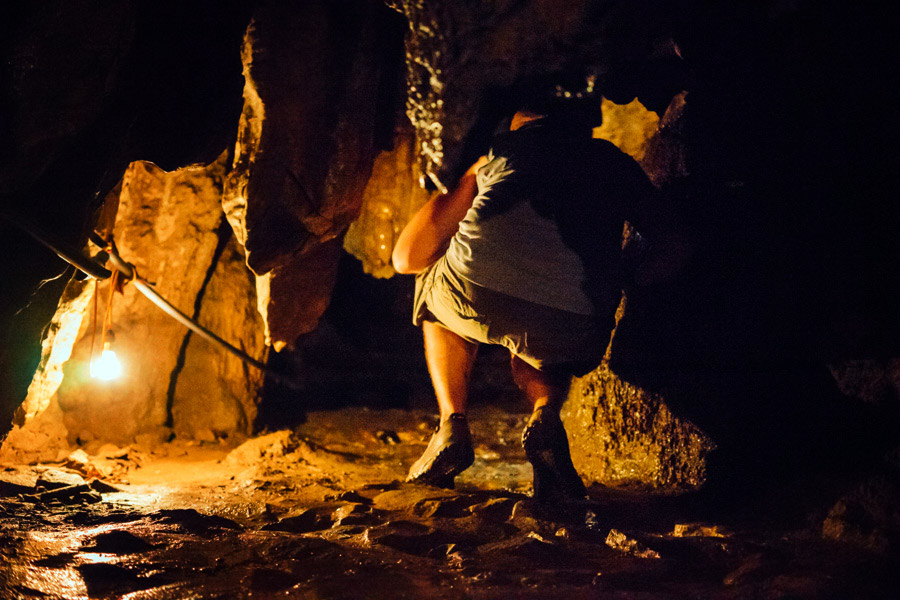
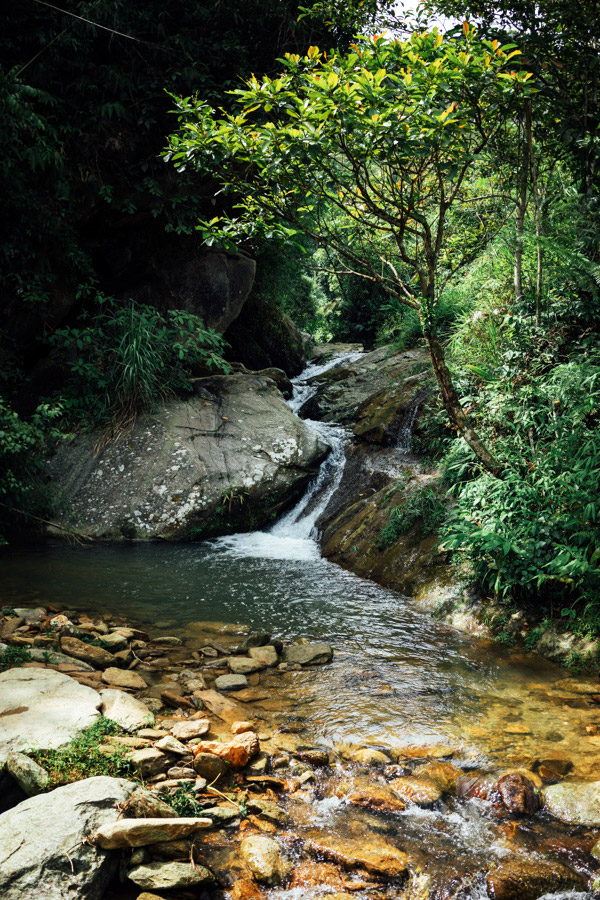
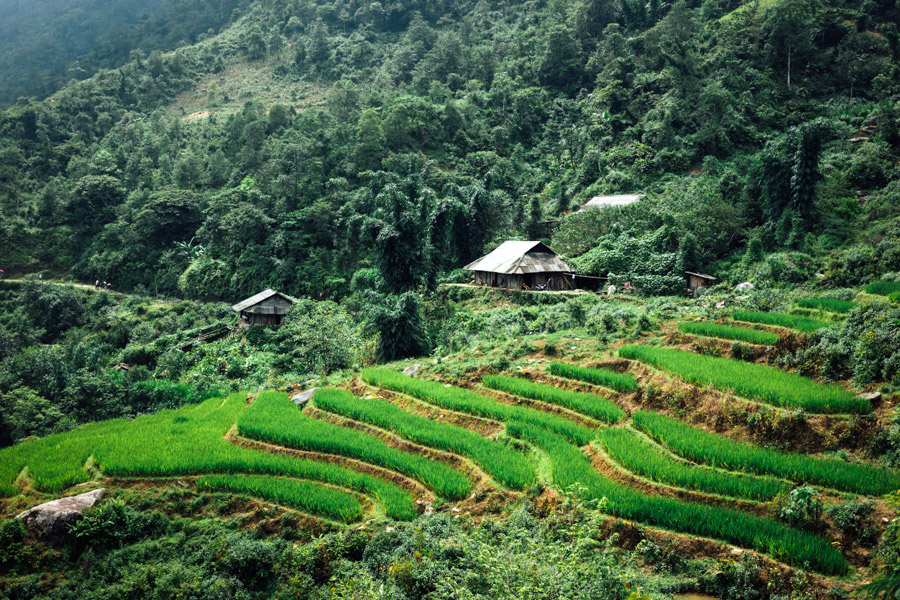
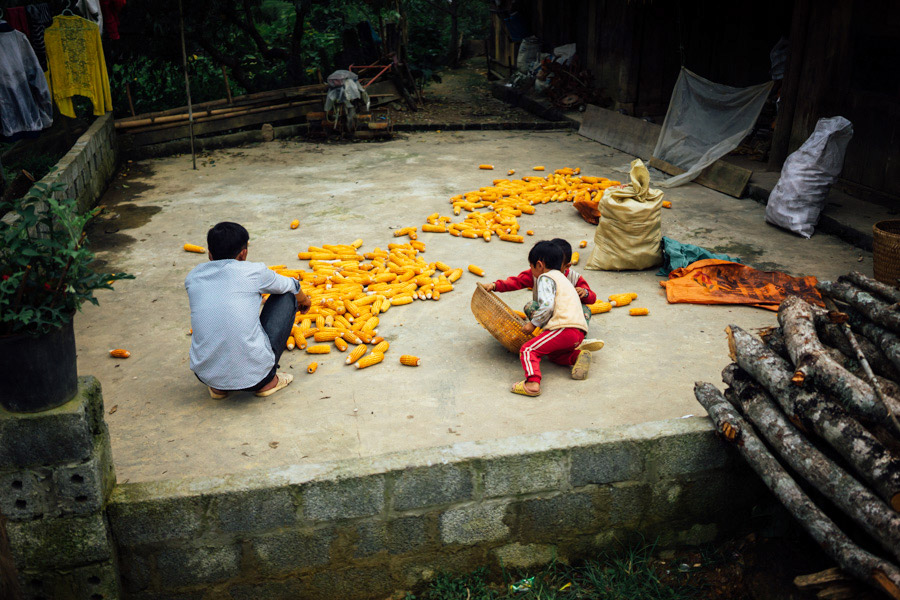
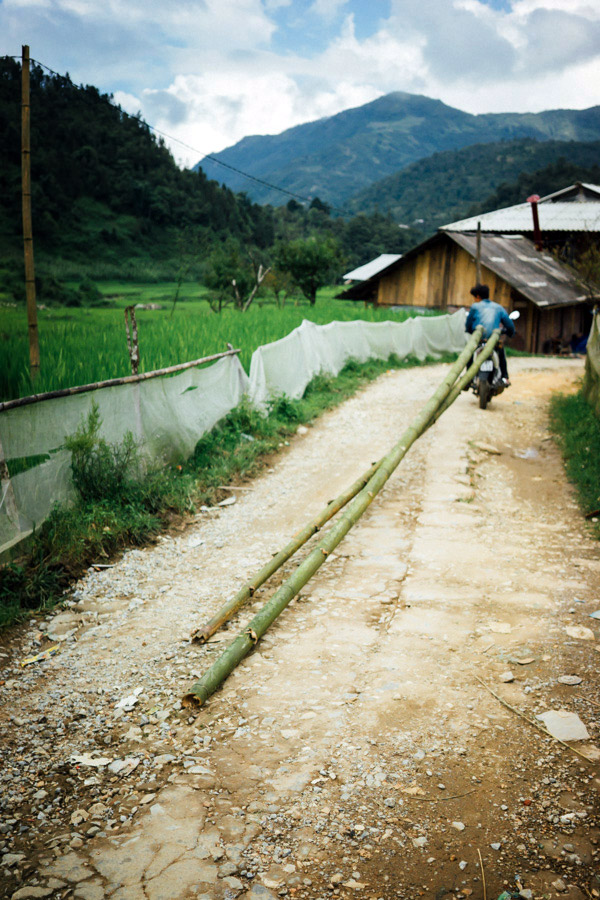
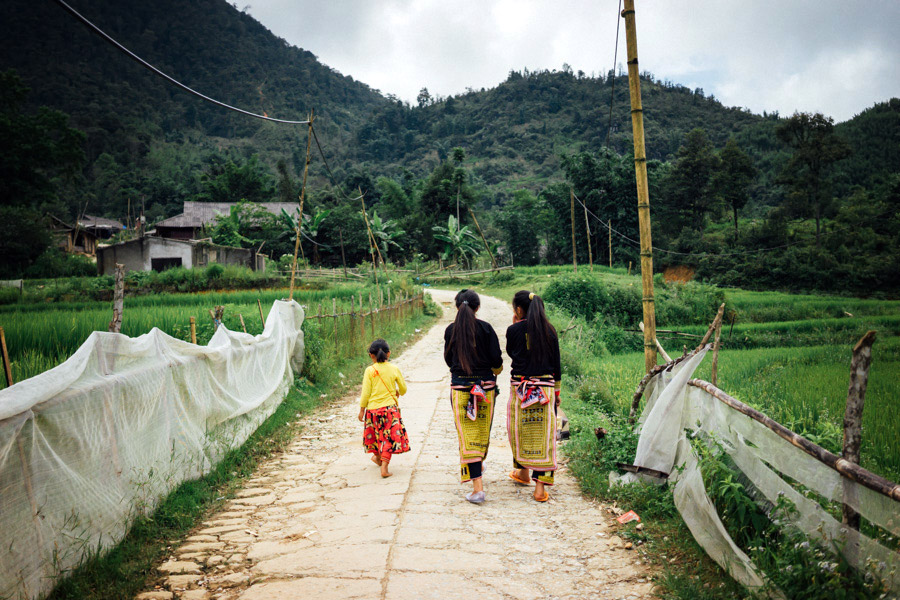
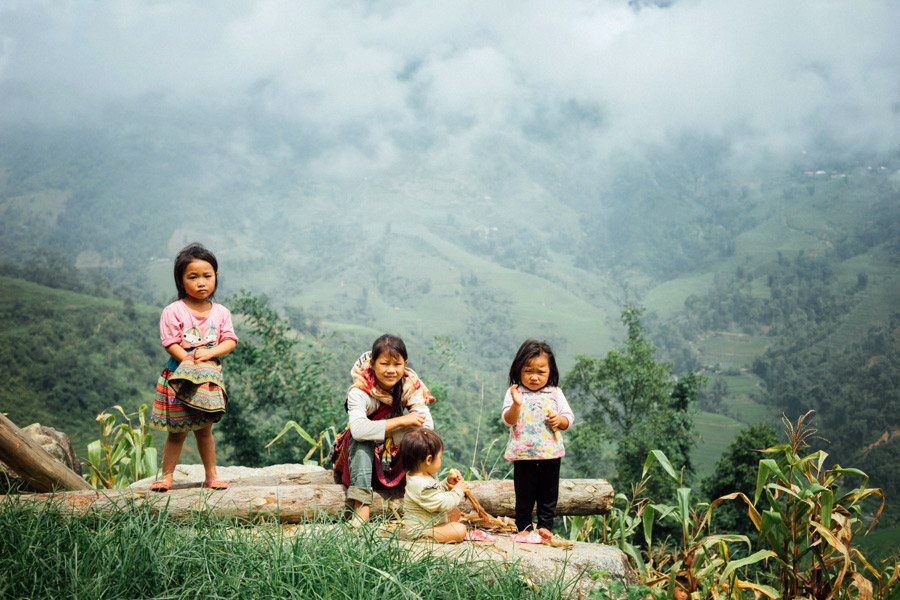

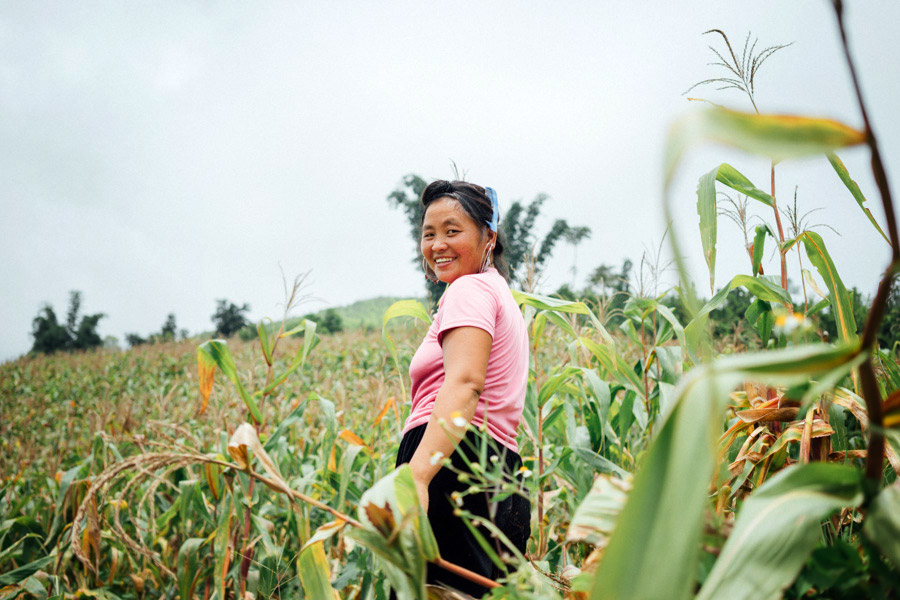
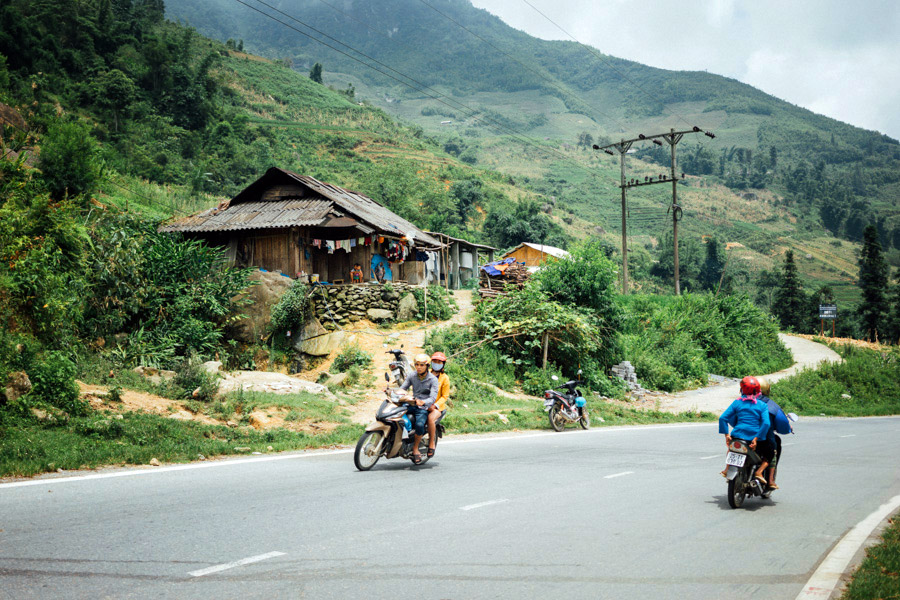
We finally arrive at our homestay, a humble wooden house of a Red Dao family of ten, set on a cliff overlooking the valley. Electricity is only for light and TV, everything else is made with open fire. Grandma is the only English speaker, and her welcome is as warm as a grandma’s could be. She is wearing traditional Red Dao clothing, a hemp robe dyed indigo blue with colorful embroidered patterns. We sit outside on small wooden stools, munch on french fries, and watch heaps of corn roast for the chickens. We talk, sharing a bit about ourselves and our cultures, and soon learn about the tragic human trade of the surrounding villages - daughters being sold into marriage to Chinese tourists (the border is only 20-30km away) for a mere $3,000, a large fortune here. Our shock translates to sadness in Pế and grandma’s eyes.
Their life is simple, humble, but full of joy, laughter, and the screams of a three-year-old girl running around, the end of a toilet paper roll to her mouth so to be as loud as possible. Her older brother is proud, also blaring, and butt-naked most of the time, his pants a size too big. The two children join us and grandma as we pick herbs along their property, the plants serving various cures for stomach pains, joint aches, skin rashes, headaches, and more. Put them all together in a cauldron of boiling water and we have the cure-all bath we were promised. Right before dinner, grandma fills two large wooden barrels with the steeped dark liquid and hands us towels. We close the curtain and jump in, giggling as quietly as we can - our smiles too large for the room.
After dinner with the family (and plenty of happy water to go around) and a restful sleep, we hike our second day back to Sapa, passing the local market to have proper bowls of phở with Pế. Over our bowls of noodles, we finally give in and promise to come to his brother’s wedding the next day, a little shy at first, but sticking to our promise to say yes as many times as we can this year. And we could not have been more right.
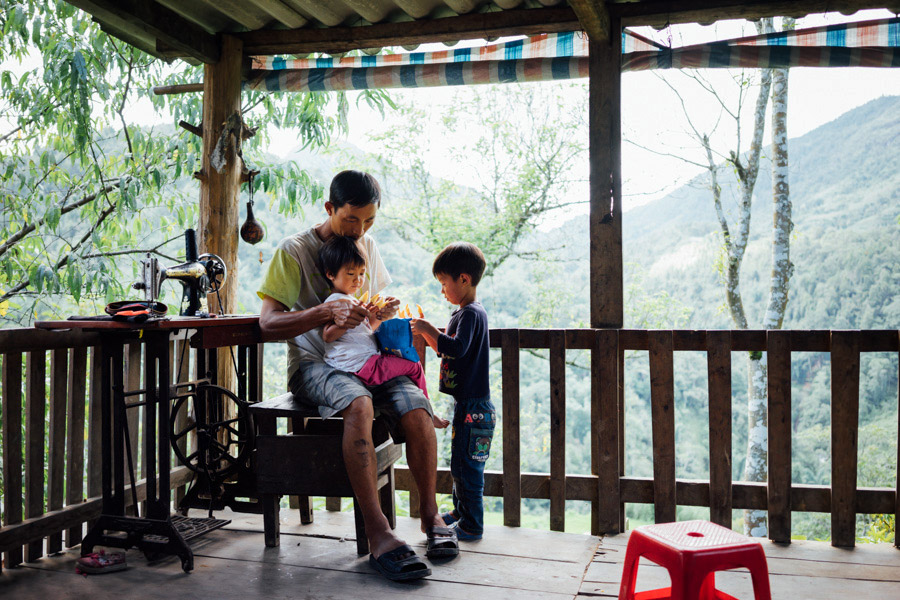
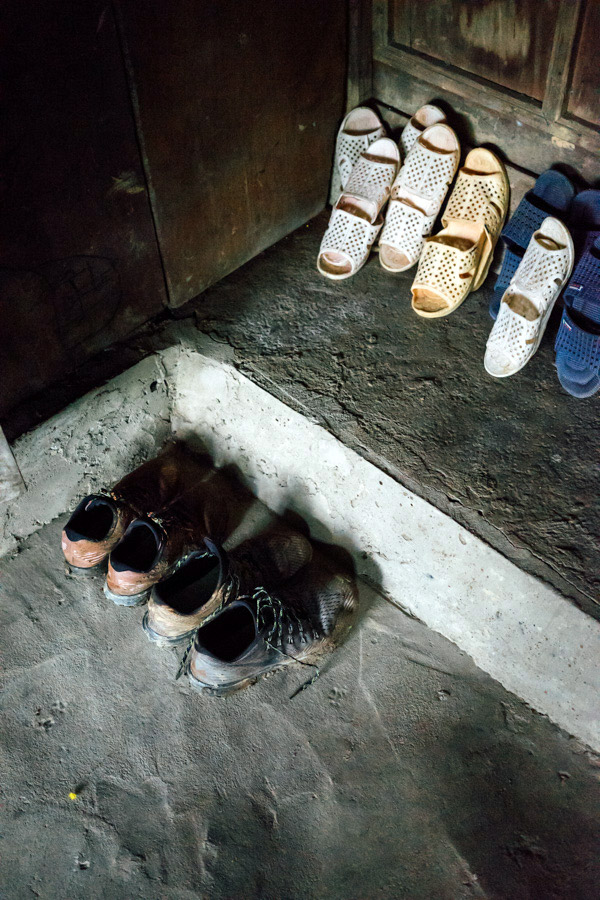
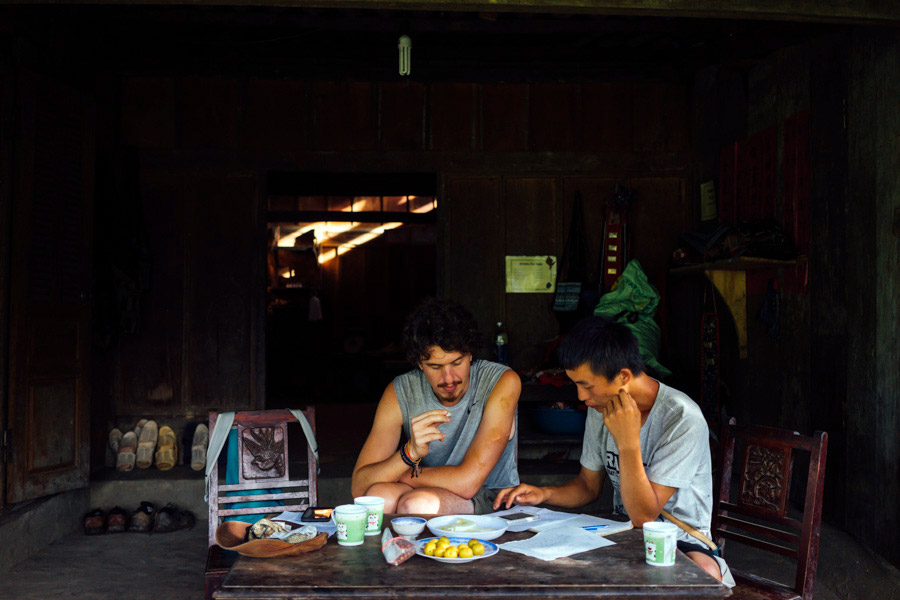


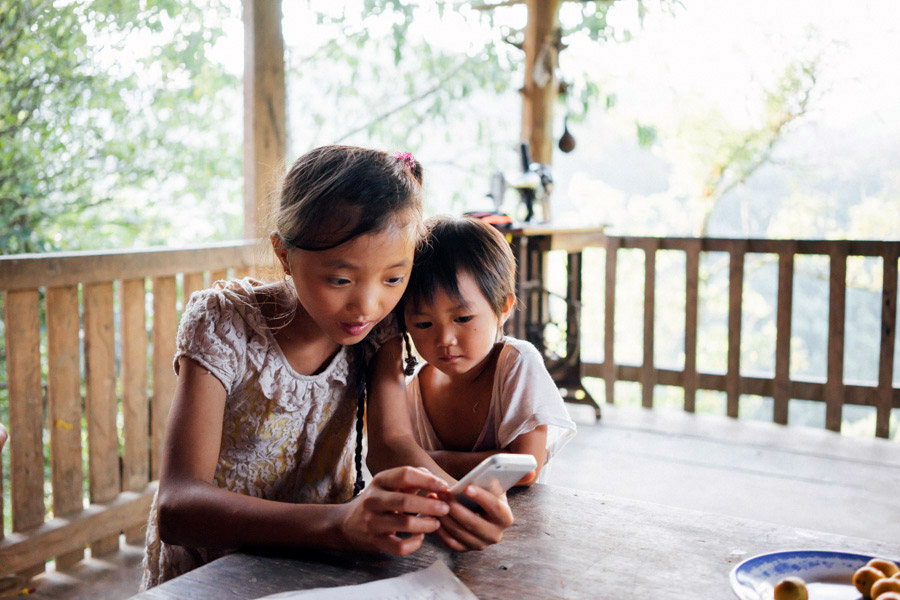
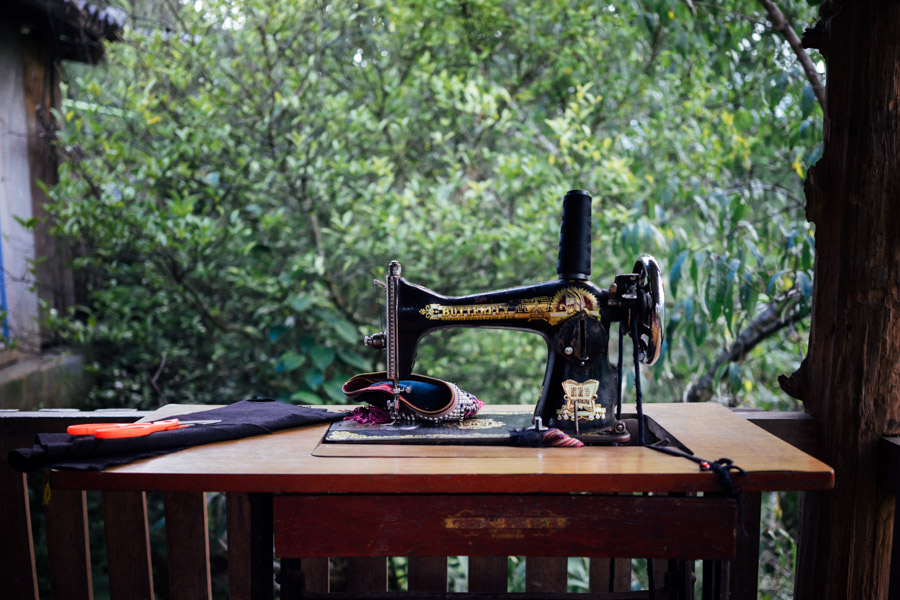
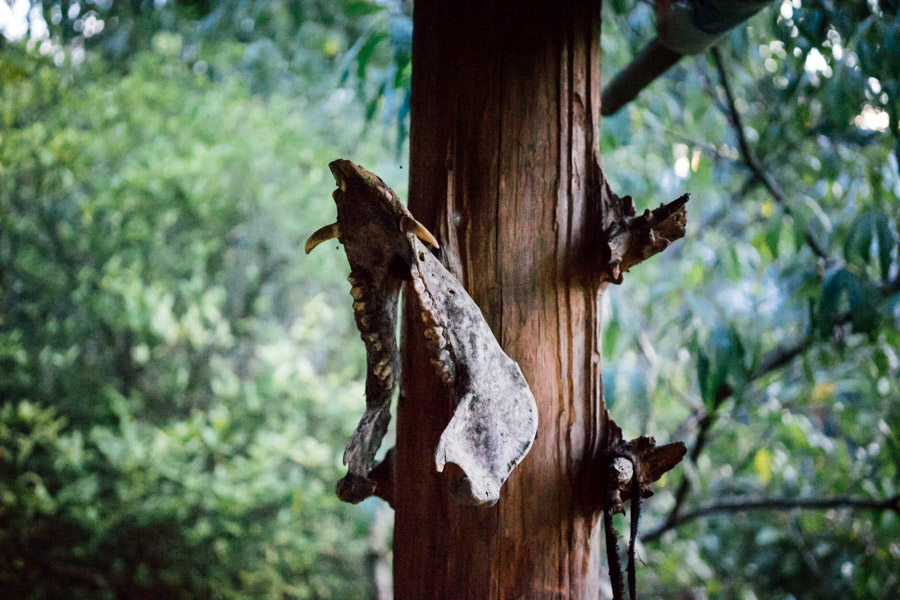
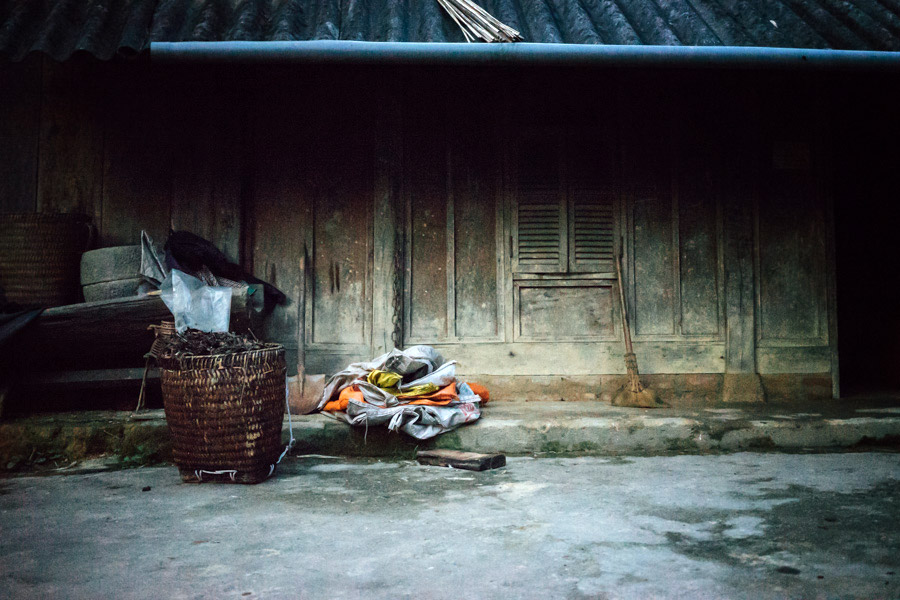
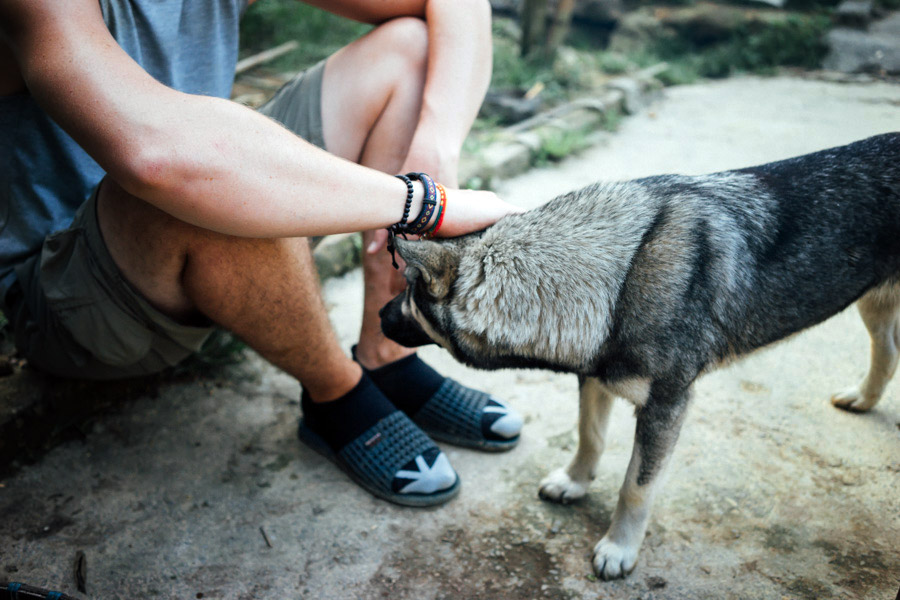
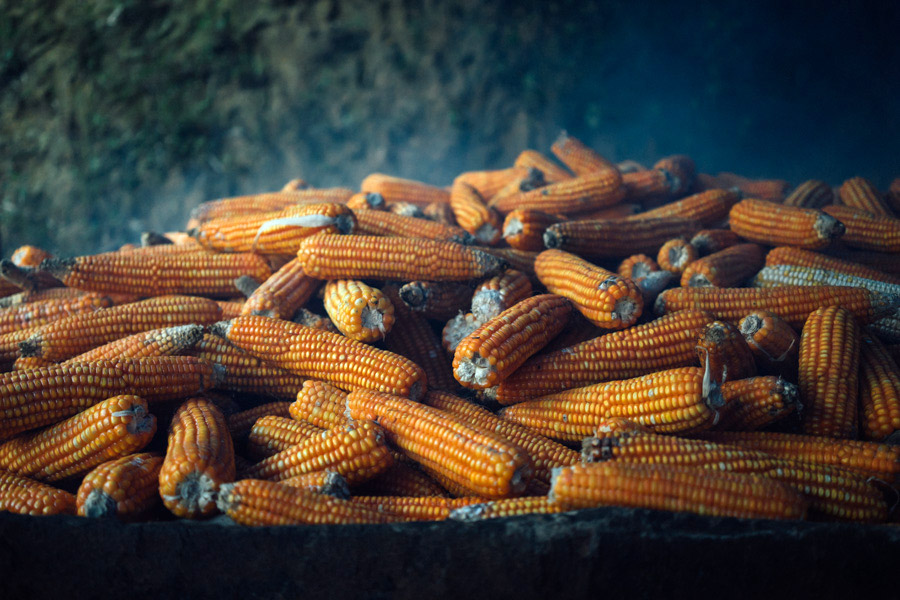
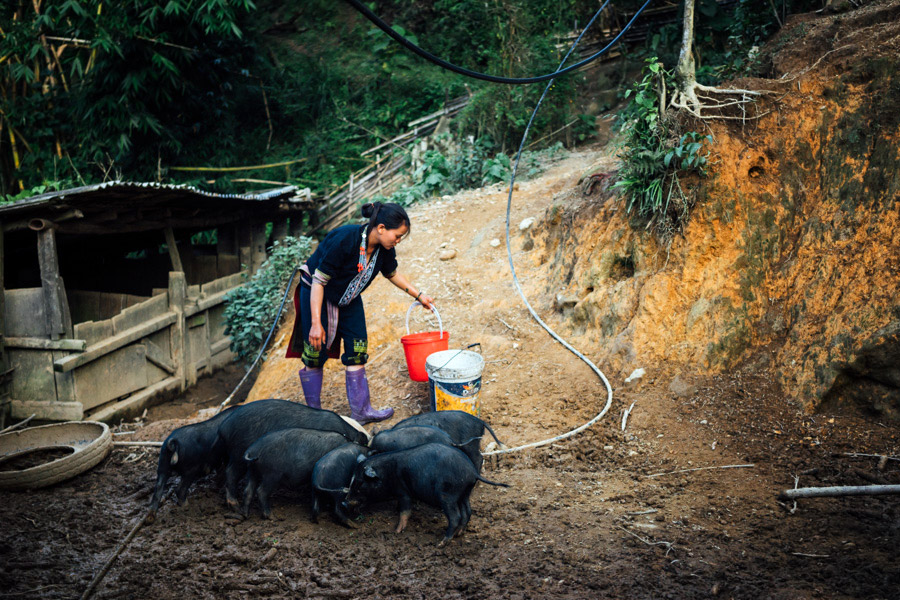
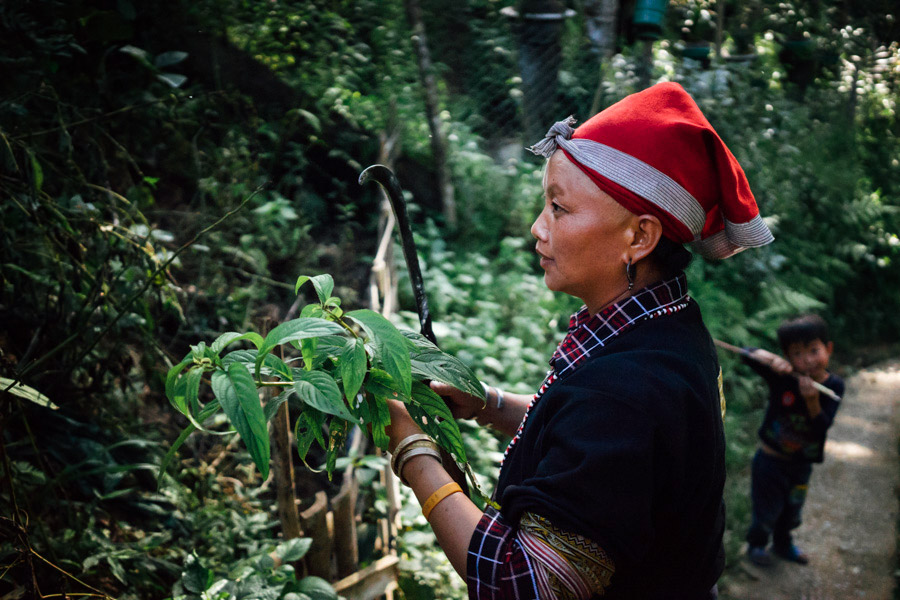
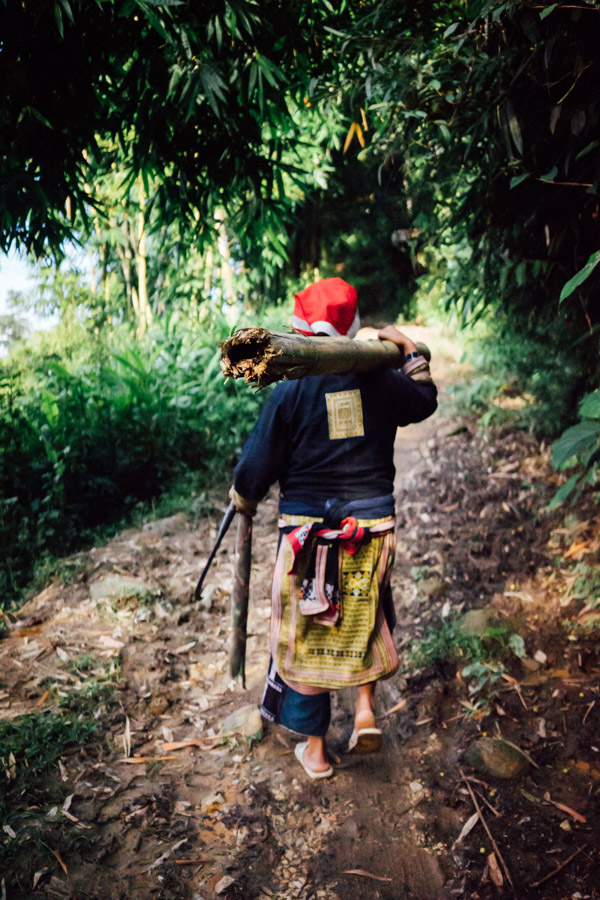


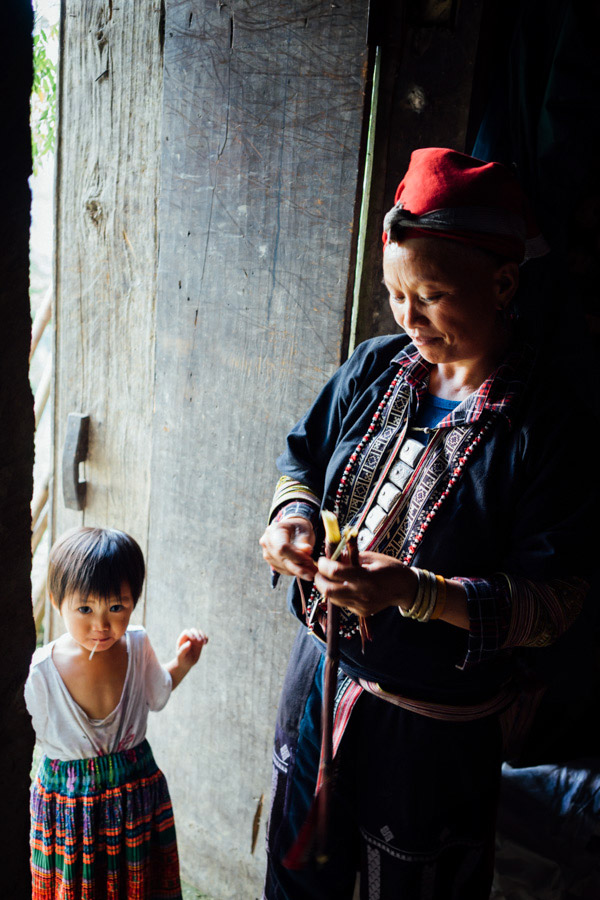

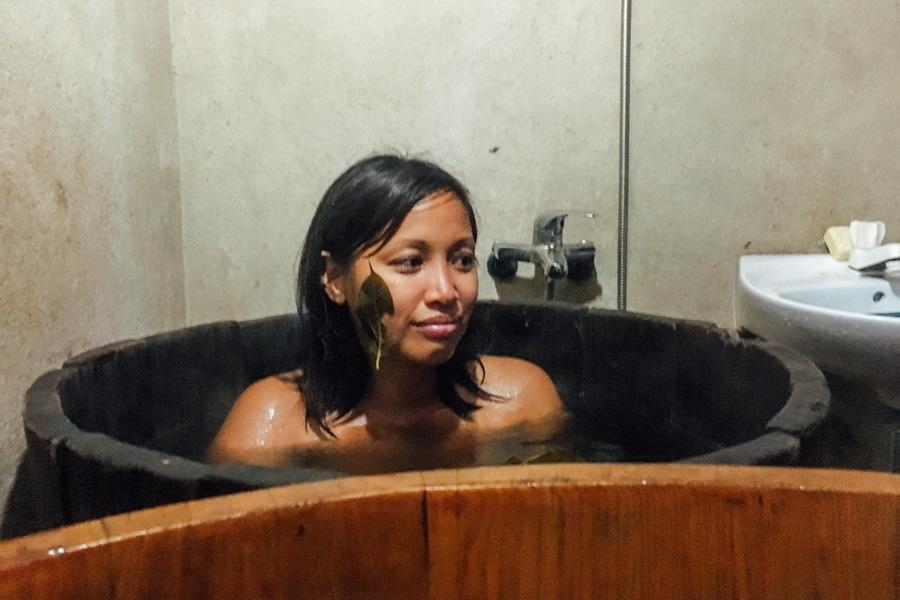
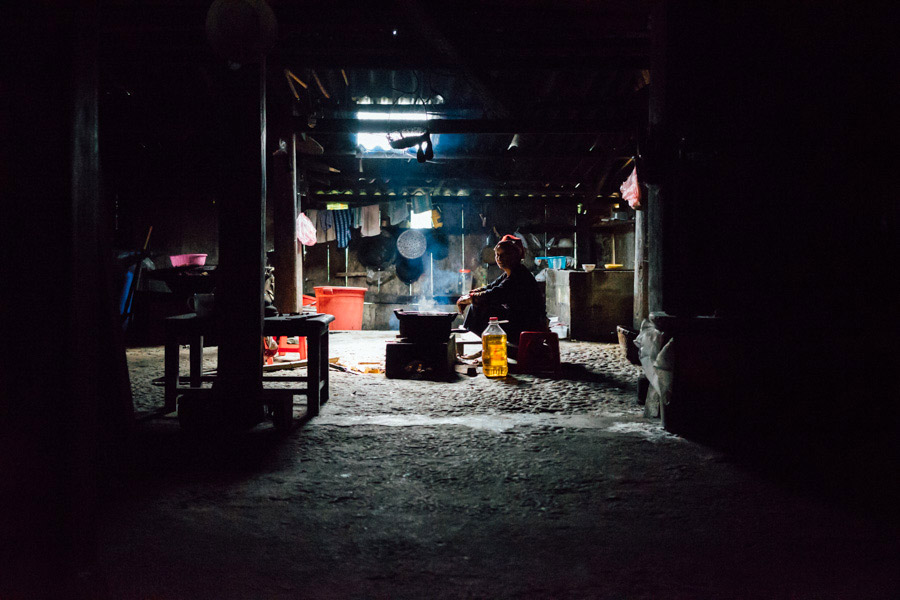
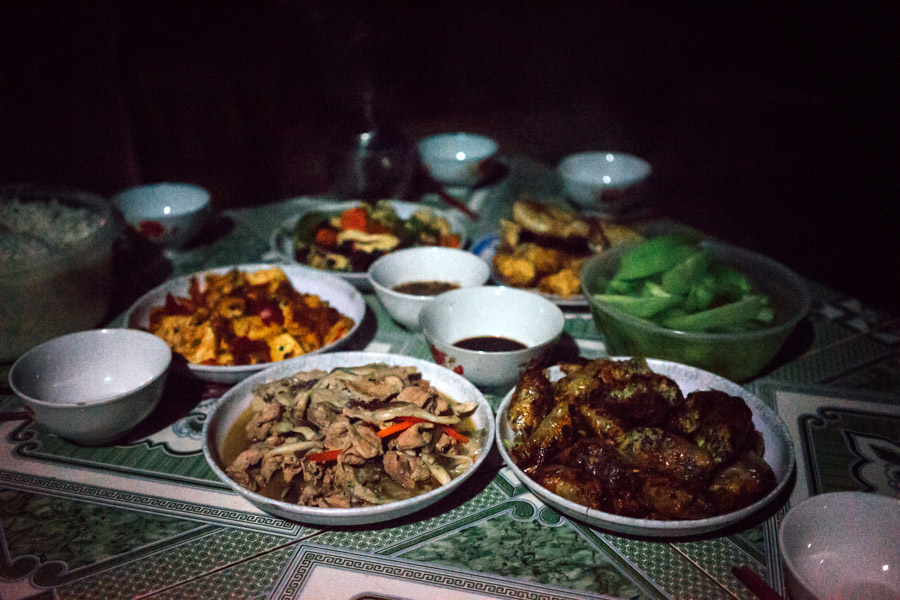
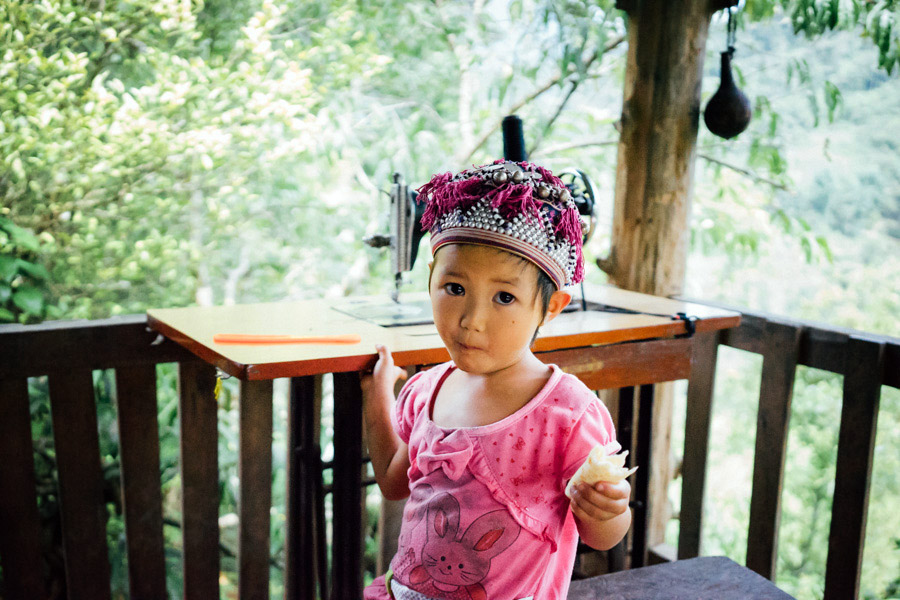
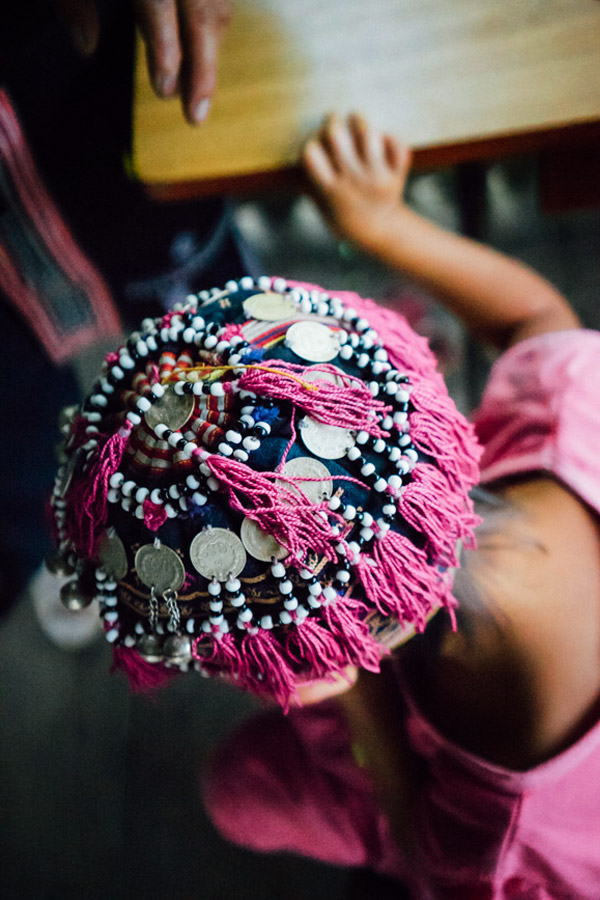
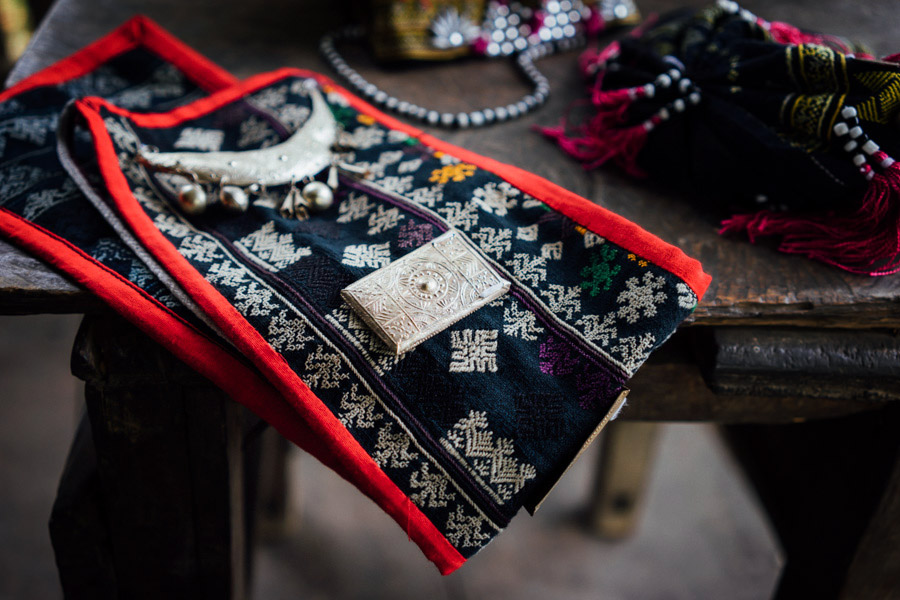

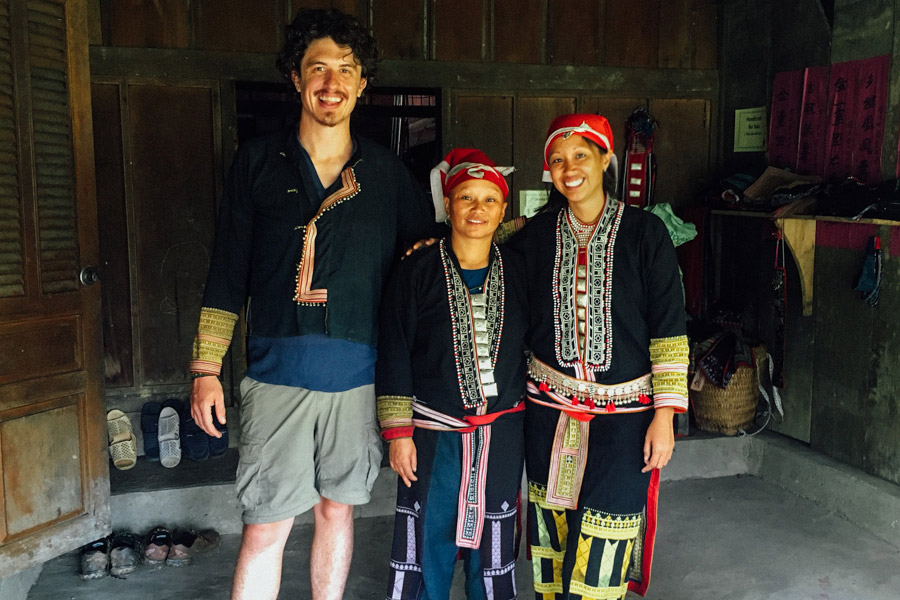
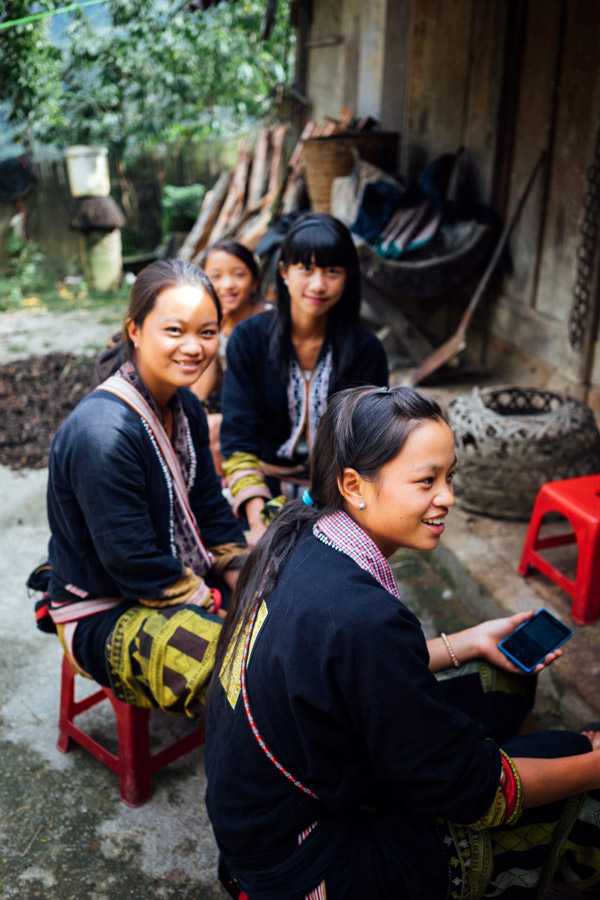
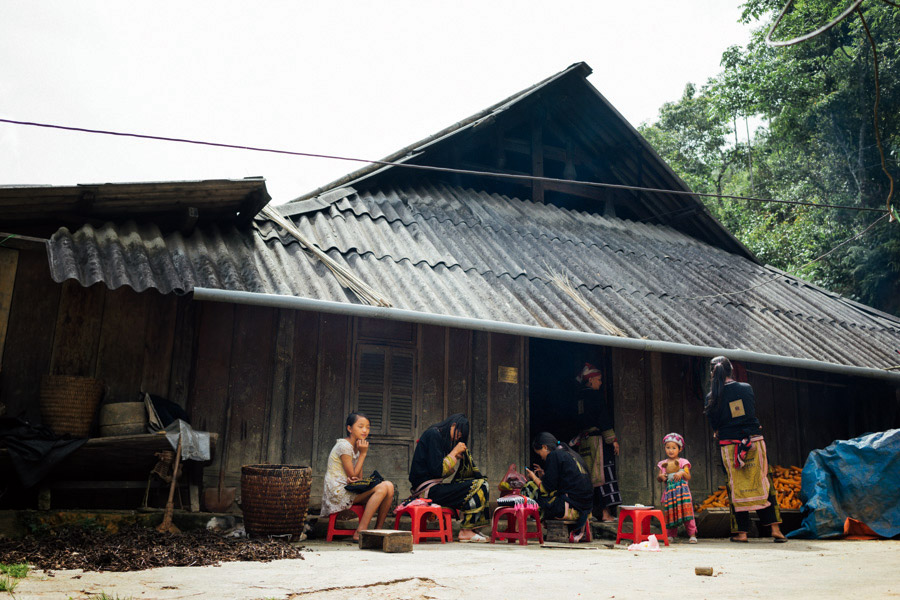
We rent a motorcycle to head over to Pế’s brother’s wedding the next day, taking off from the top of the valley and riding alongside the dramatic and breathtaking landscape. The road is full of potholes, giving me a chance to perfect slalom techniques. It turns to gravel and mud on a steep incline as I proudly conquer the road with a manly roar, too oblivious to notice Madie getting nervous. Finally approaching a bridge, the road is now impassable - we took a wrong turn as it turns out.
After an hour of being lost and messaging Pế, we finally arrive at his village, Y Linh Ho - between Ta Van and Cat Cat. The towns are spread out amongst the rice fields, so we meet at the only describable place: the local shaky red bridge. As we head over to his house, sweating profusely after 20 minutes of uphill walk, we enter a small house (missing to hit my head twice) filled with many of Pế’s (slightly drunk) family and friends around a few tables.
The wedding is humble, with many guests approaching the bride and groom for a traditional speech and toast, spoken quietly as if only for them. The rice wine flows, with Pế’s mother making sure we get our fair share, clearly happy we’re here. The warmth of the wine and the people quickly overtakes us. We try to make small conversation in broken English, feeding on sticky rice and spicy salt barbecued pork and boiled chicken. As we leave and thank them profusely, we’re given one of the many bracelets sold around Sapa by the mother, a simple token to remember this place.
Madie and I walk away for a couple minutes, and stop to feel this moment again: beautiful in its simplicity, sincerity and profound emotion; people we barely knew inviting us to their home for a celebration; people we may never see again but who we will remember vividly for a long time; some call it a blessing. We take a minute together and let the happy tears go away before we continue toward our motorcycle.
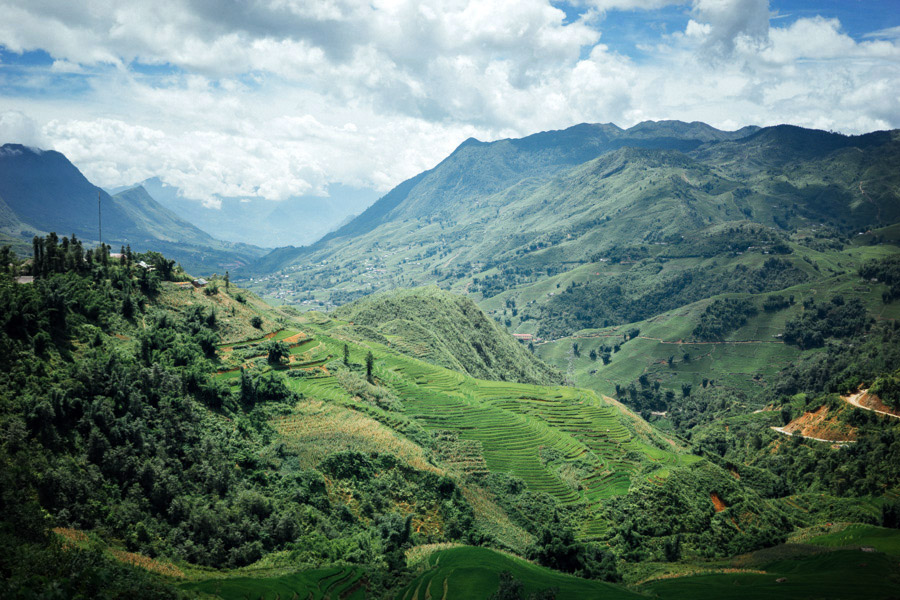

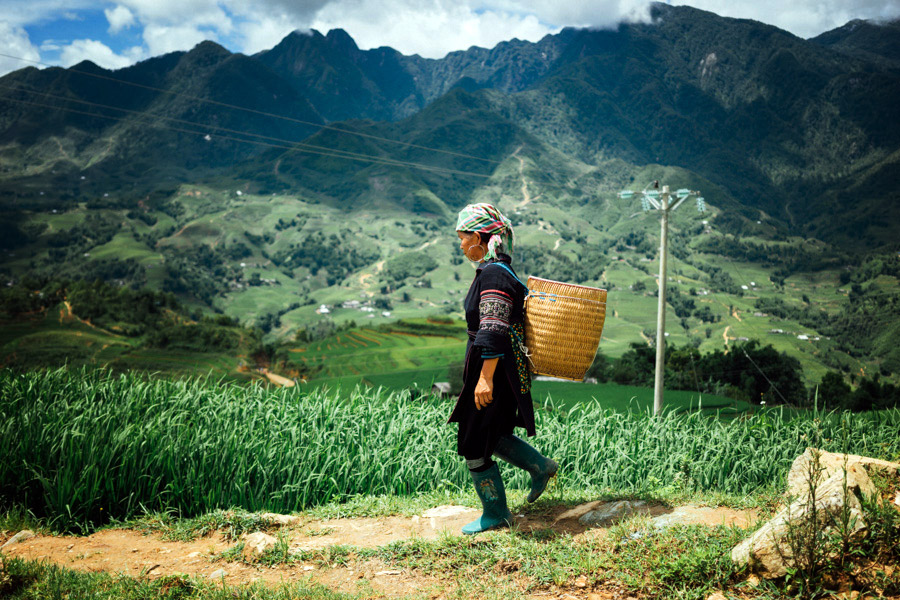
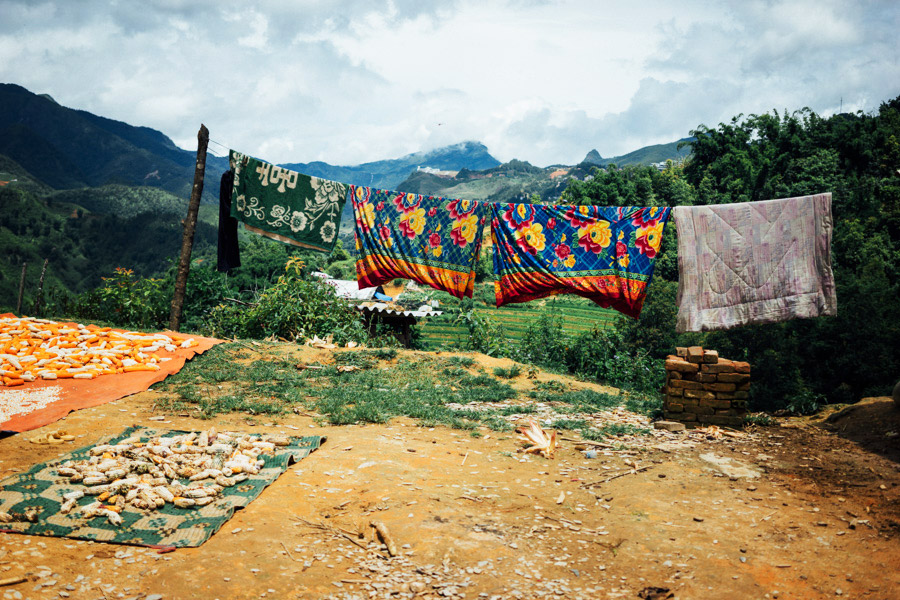
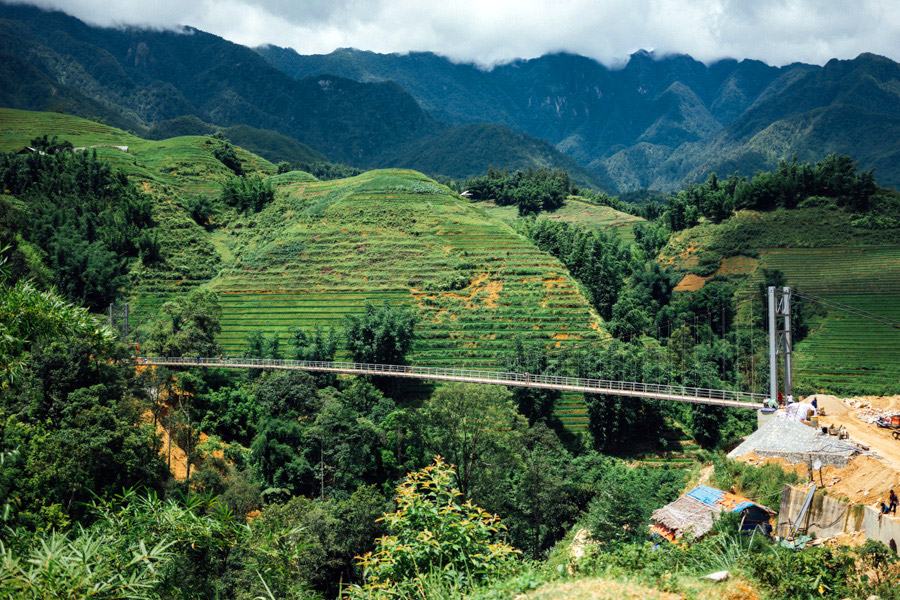
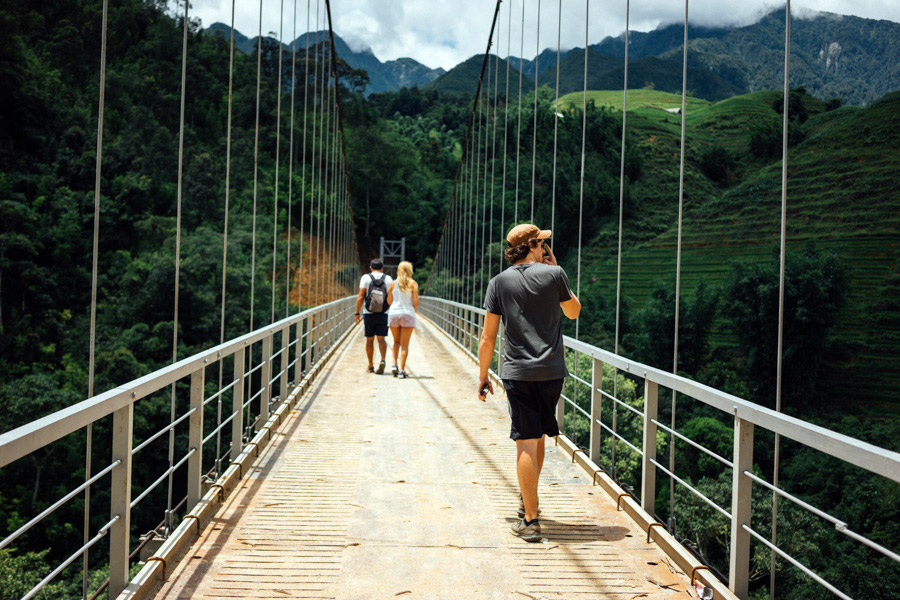
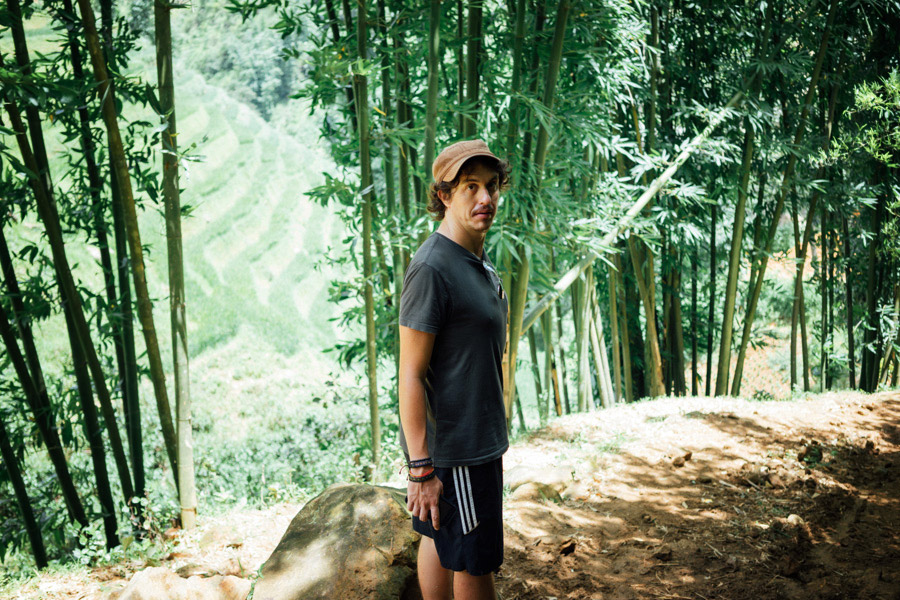

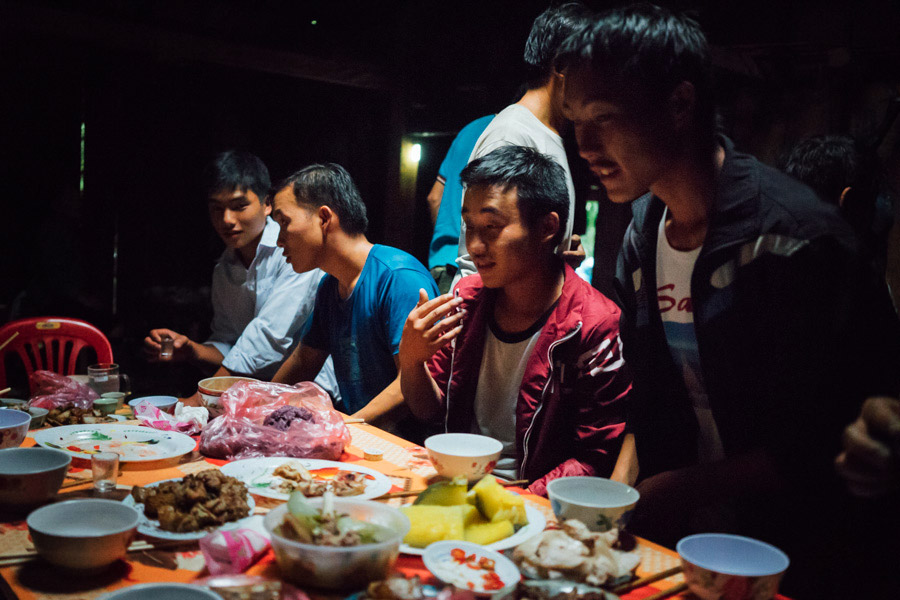
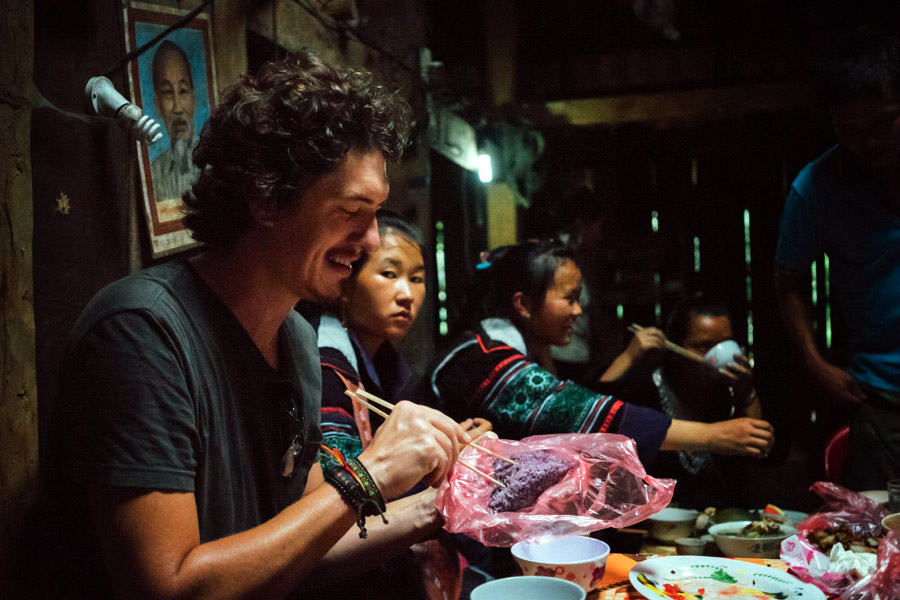
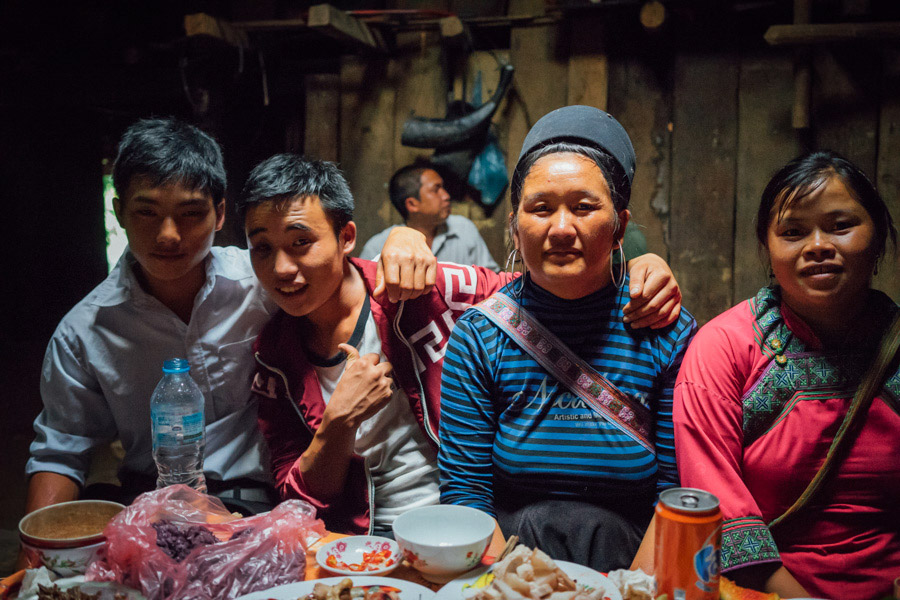
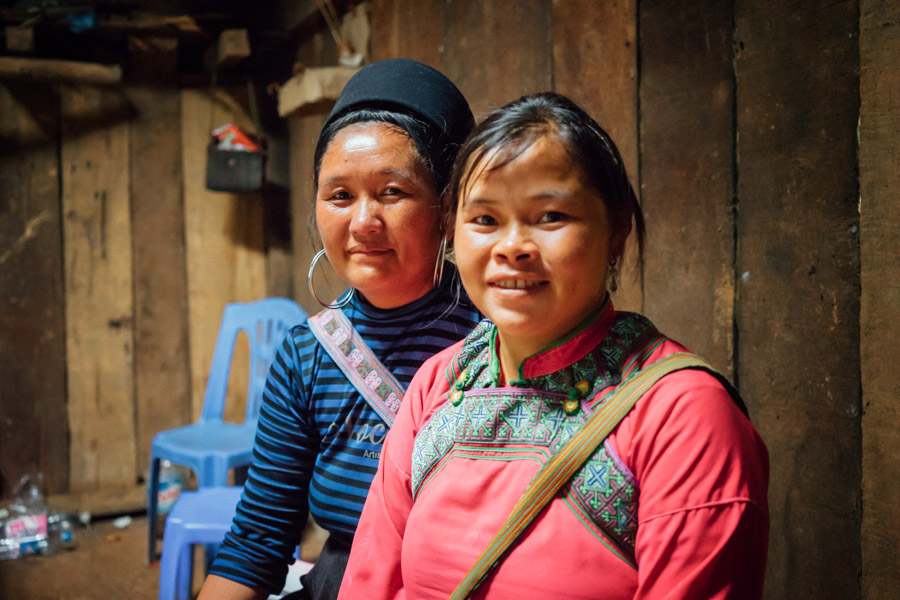
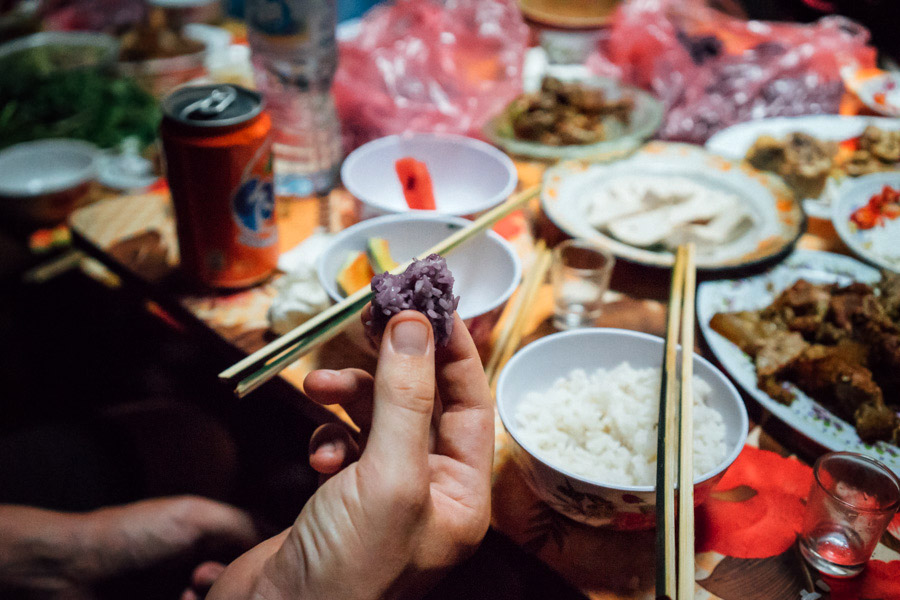
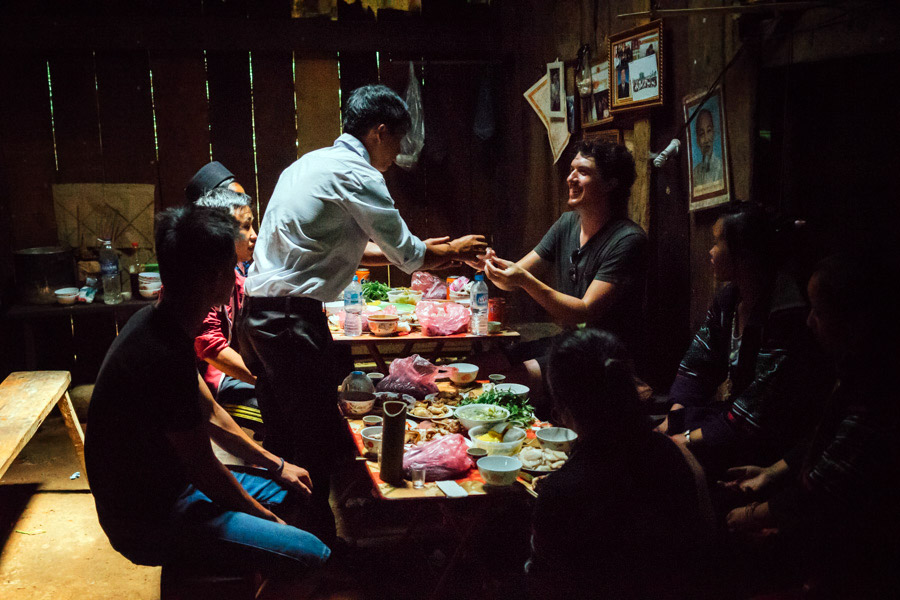
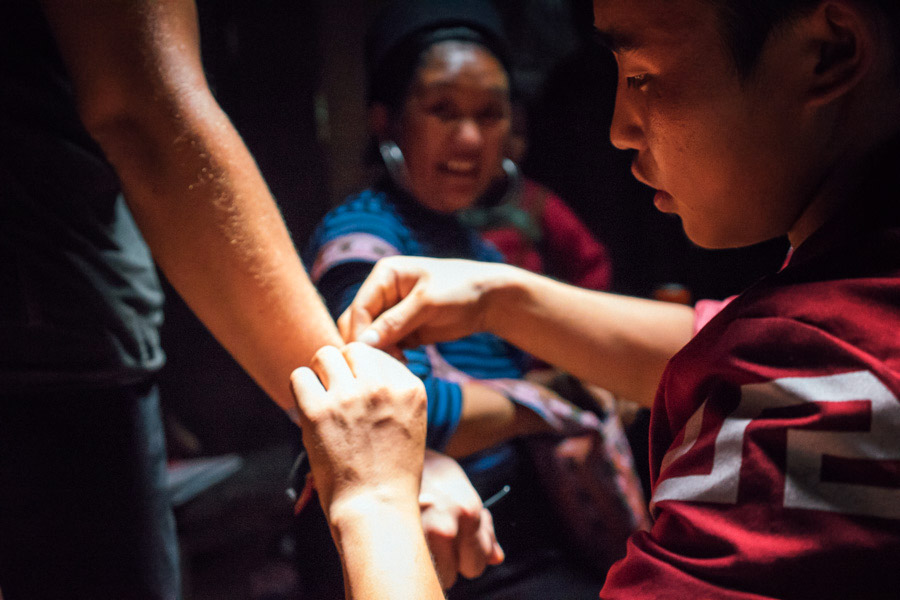
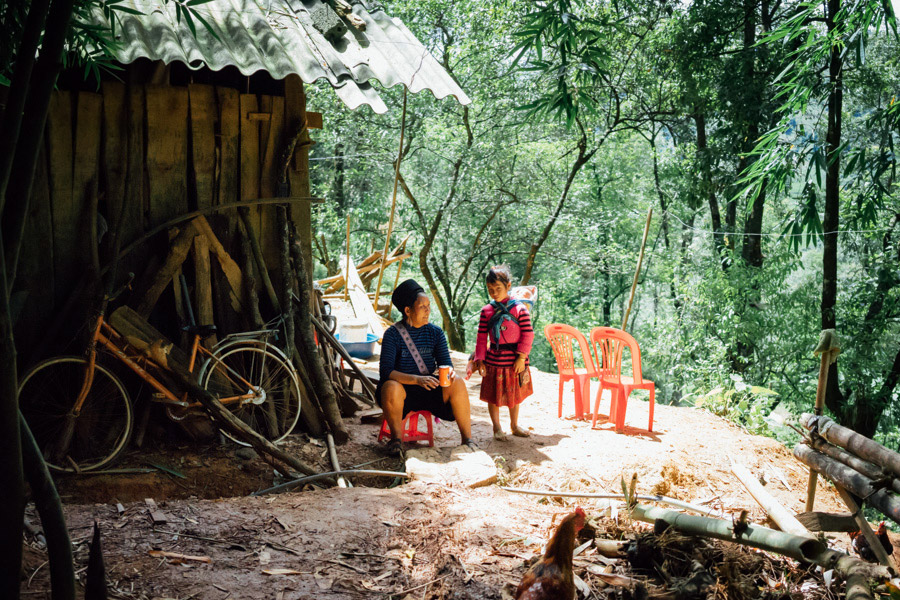

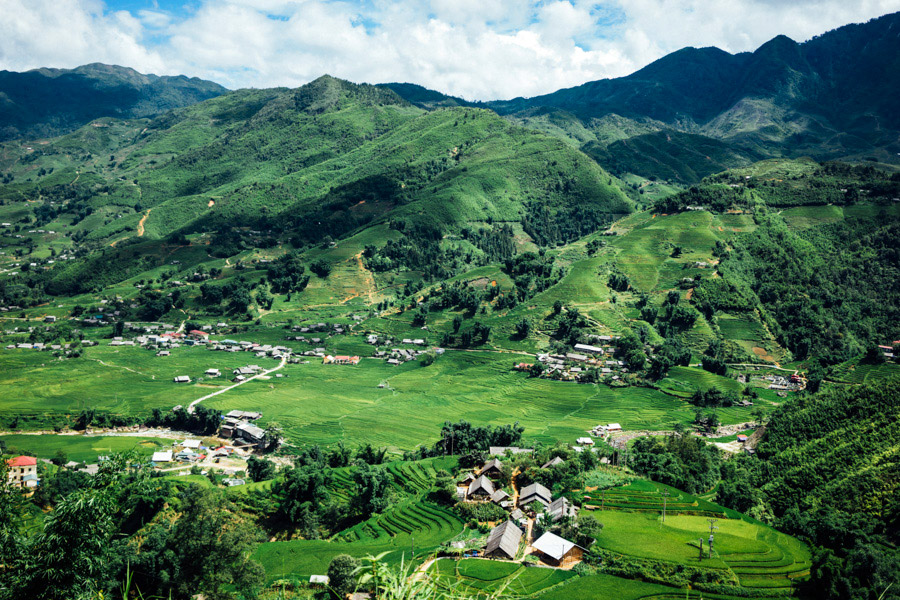
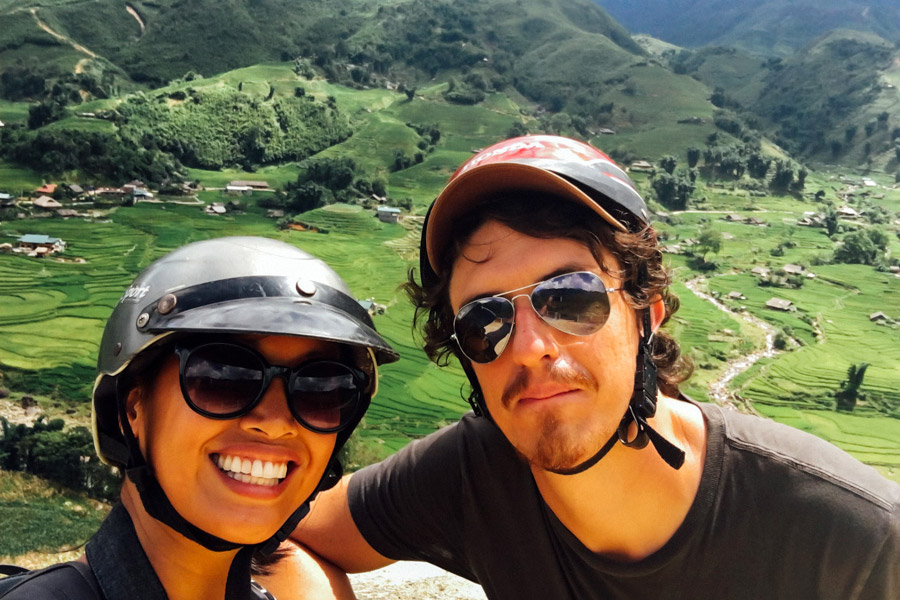

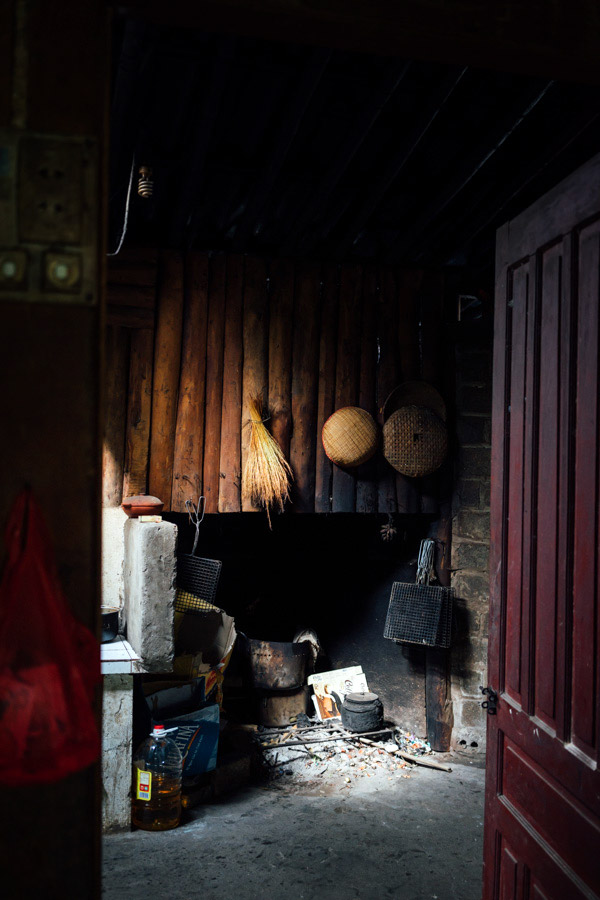




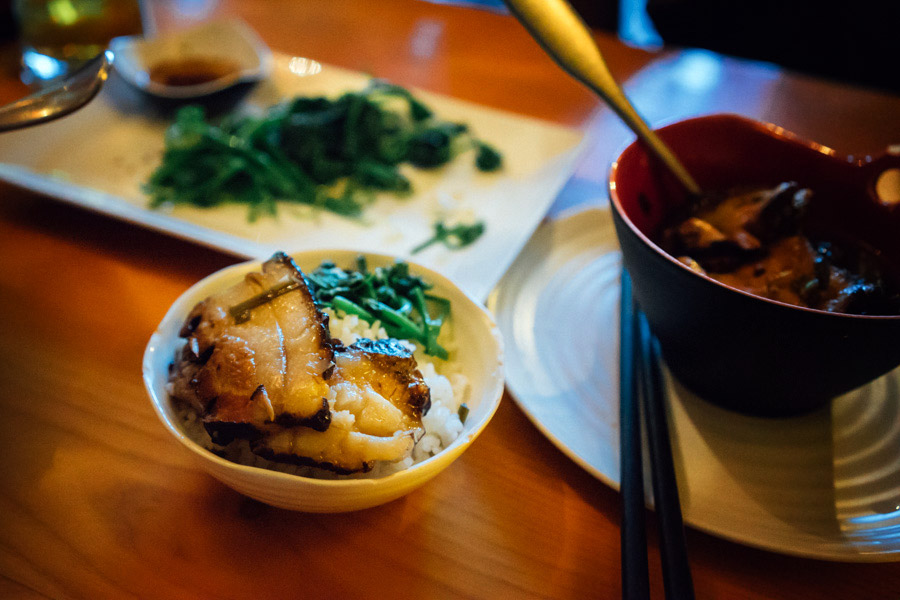
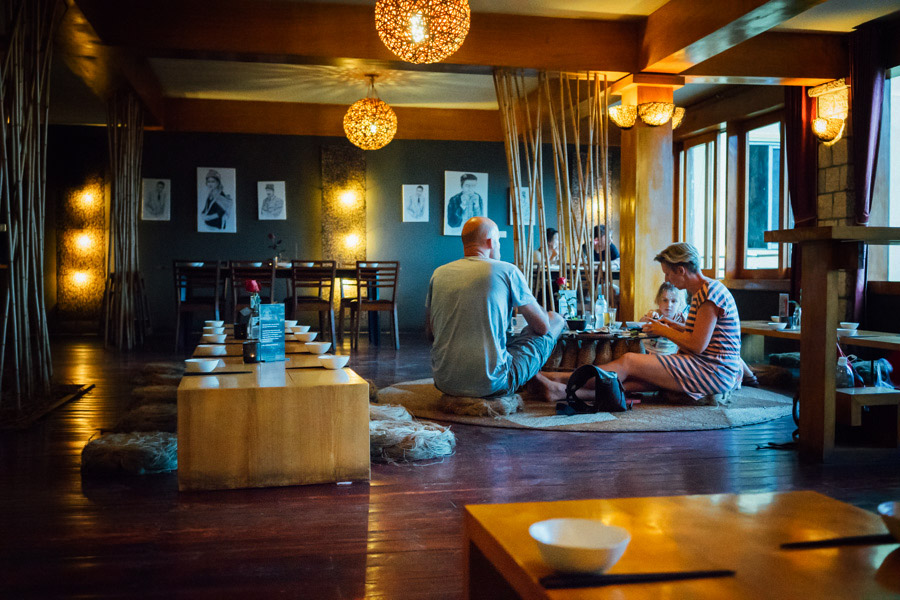
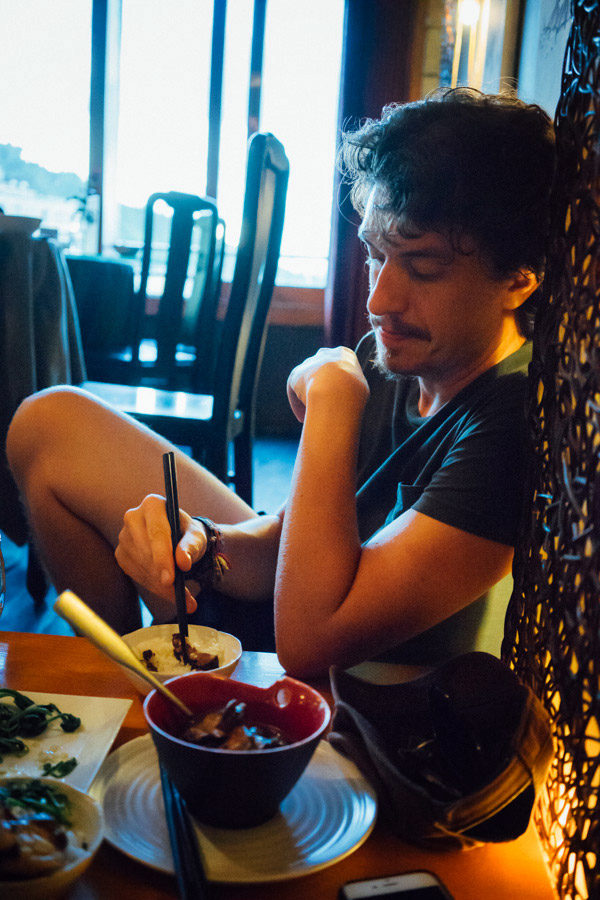
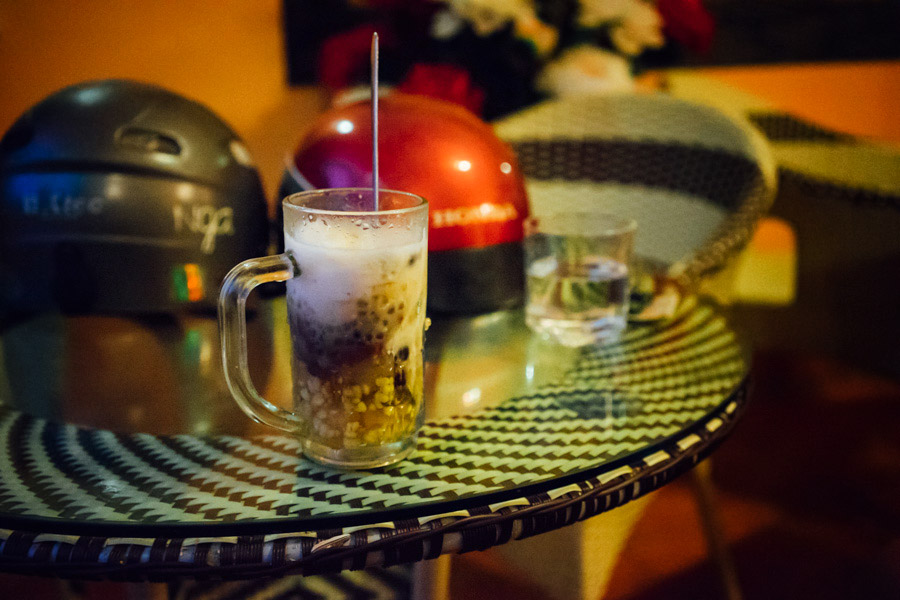
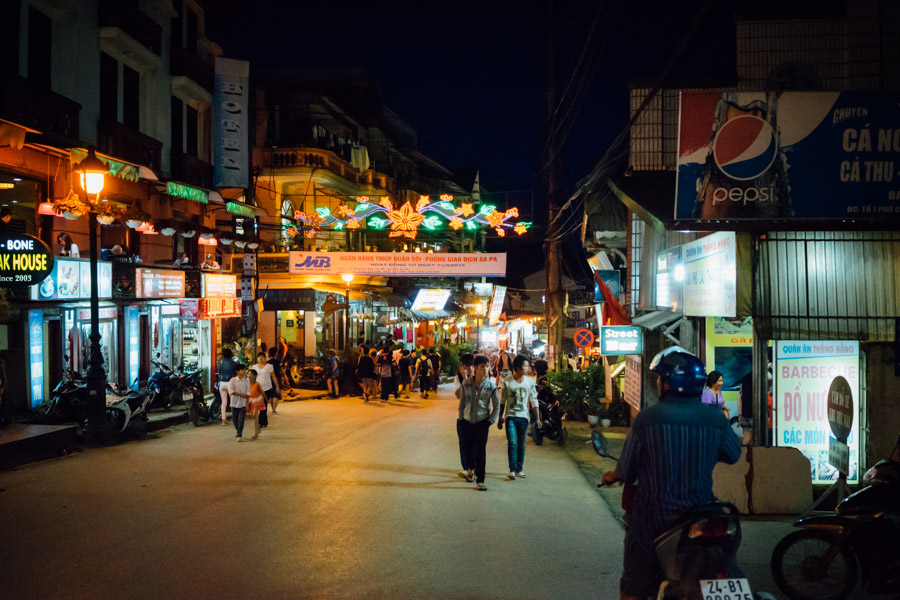
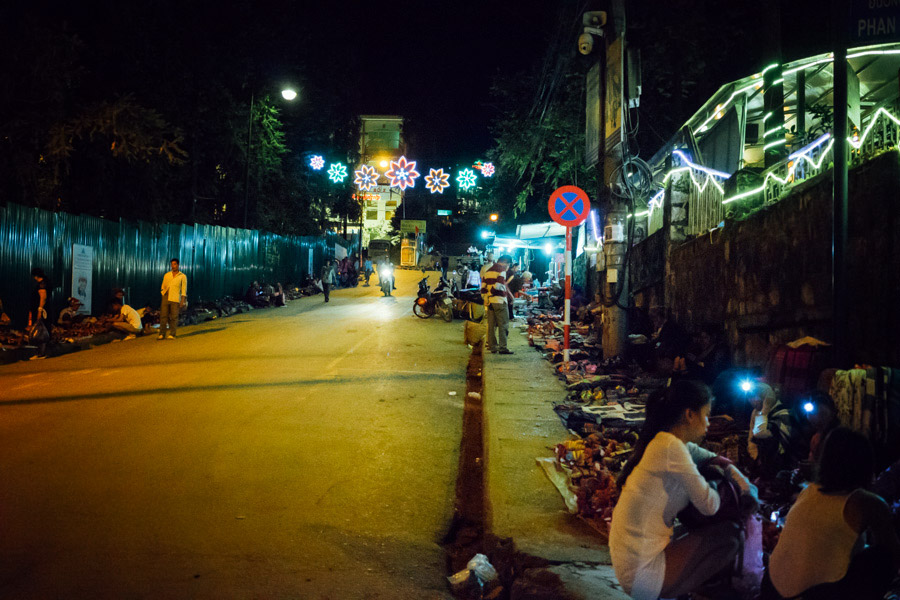
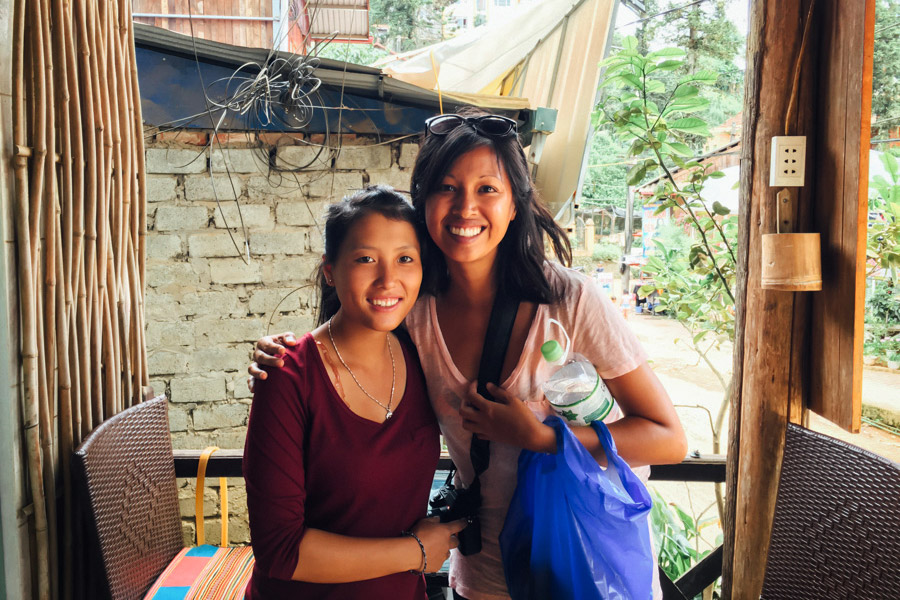
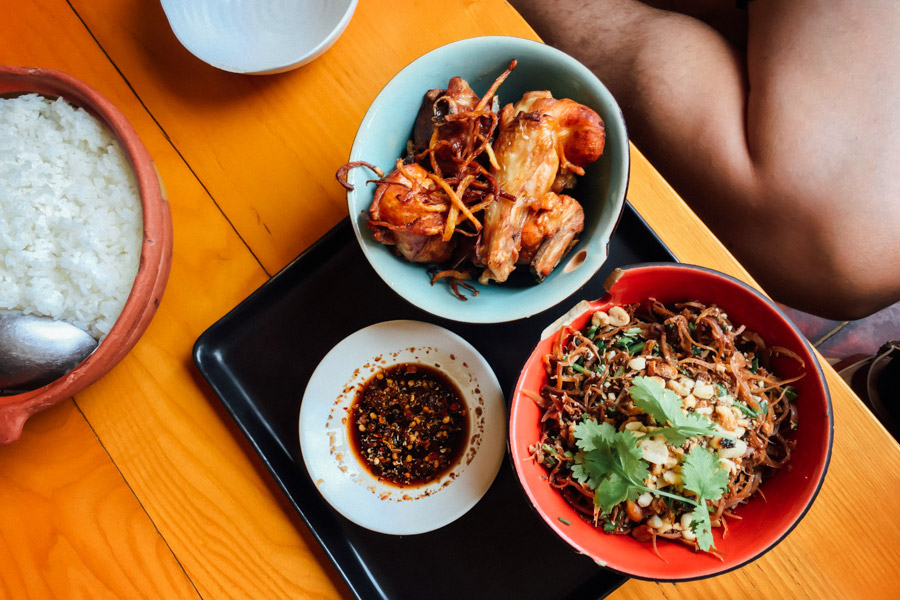
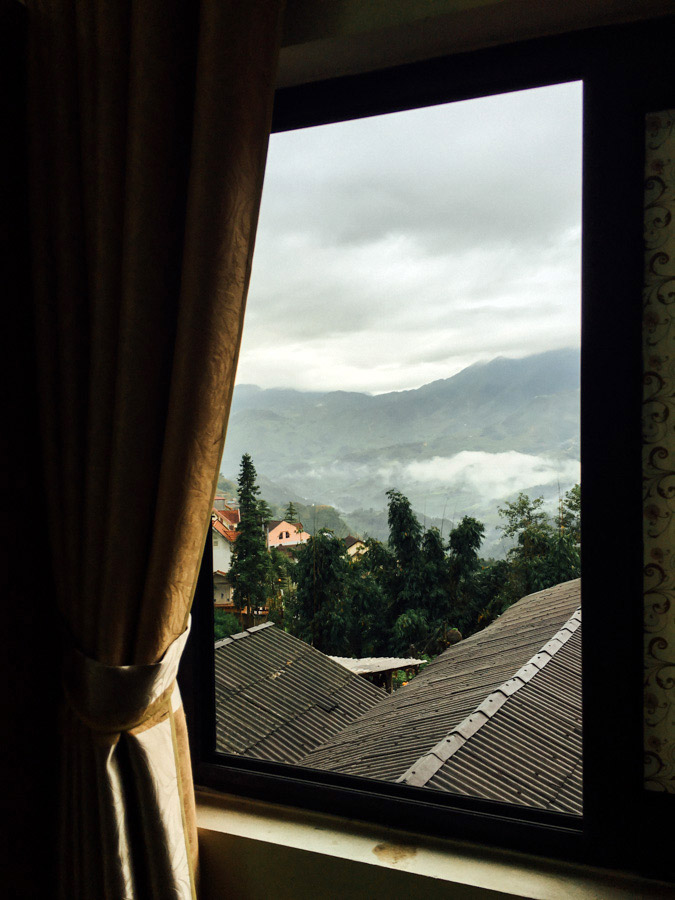
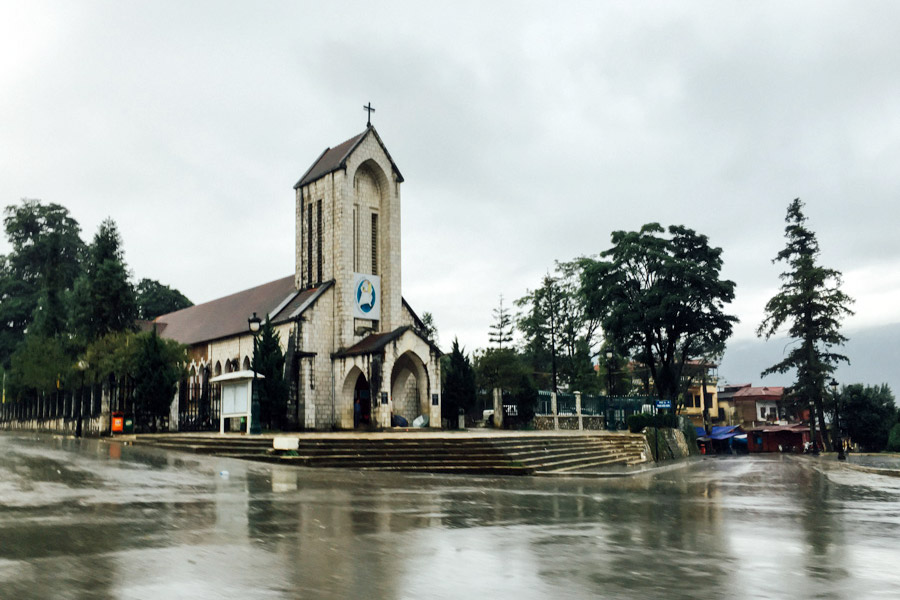
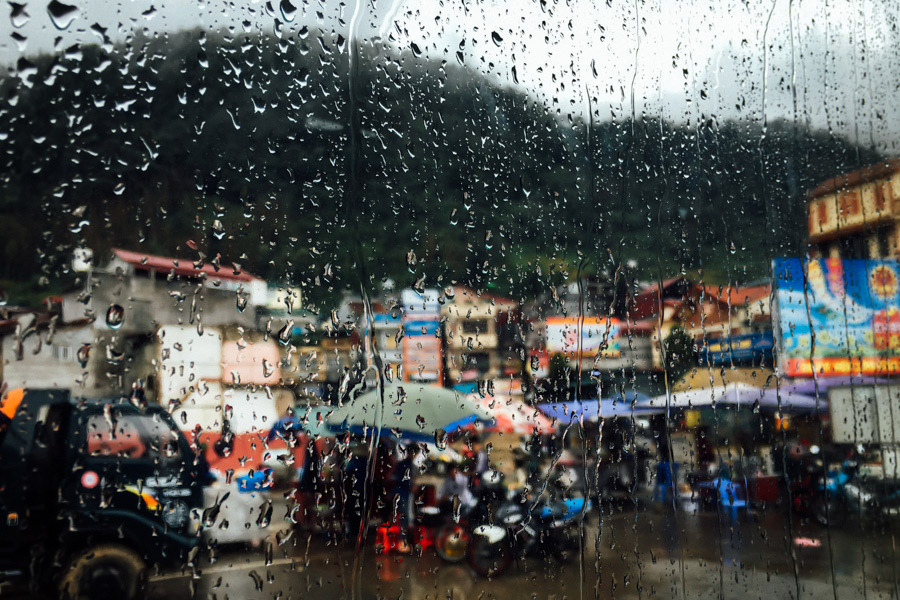
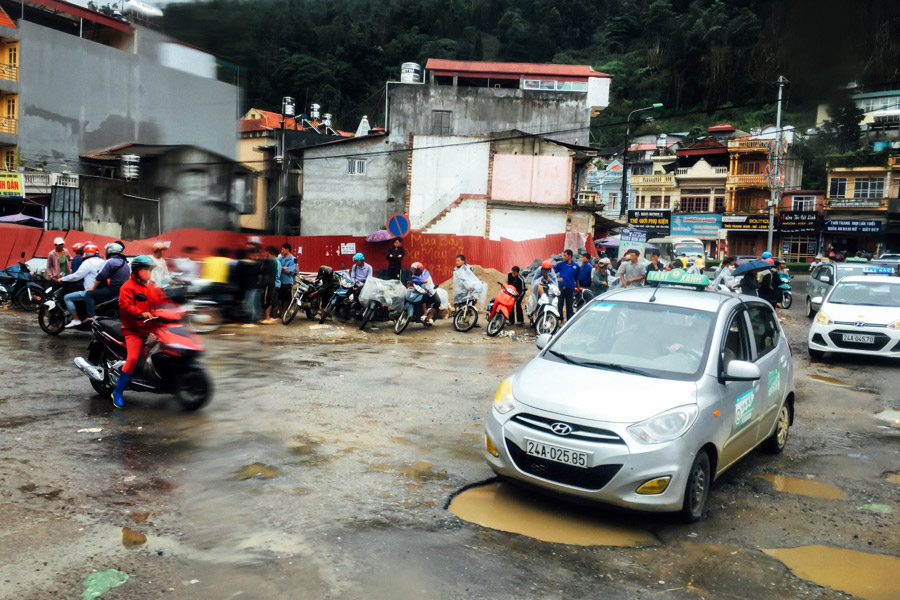
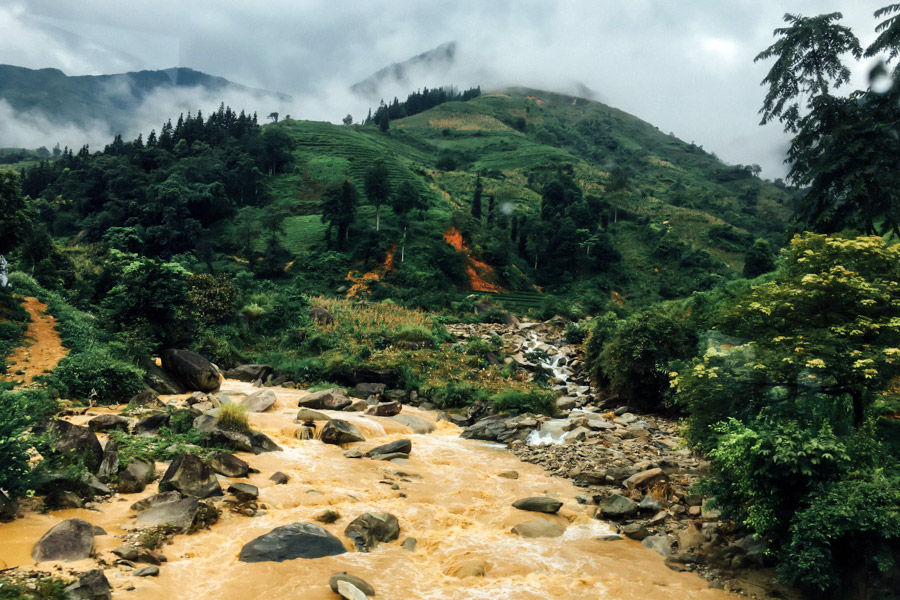
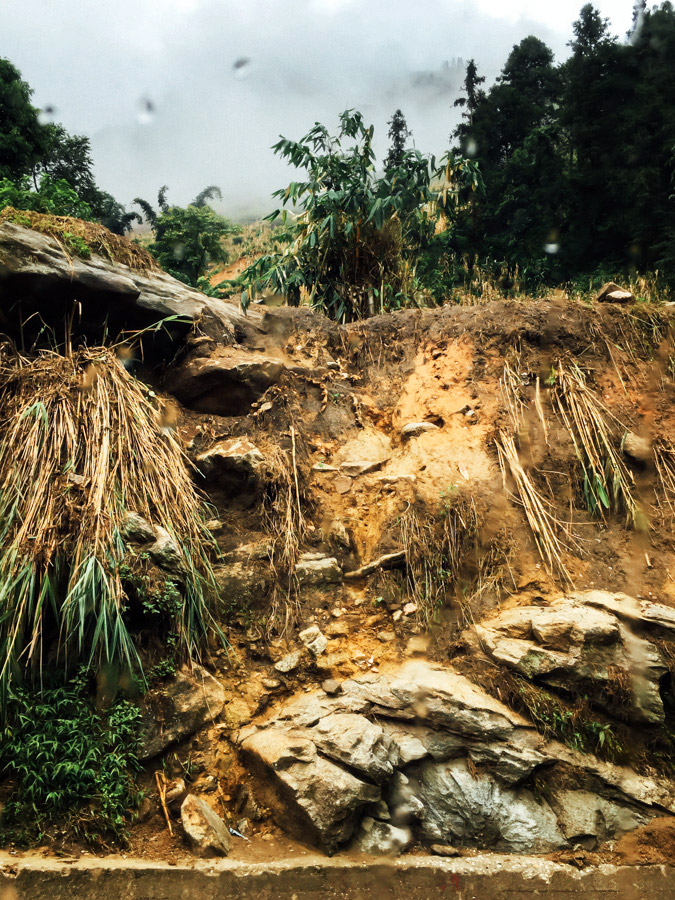
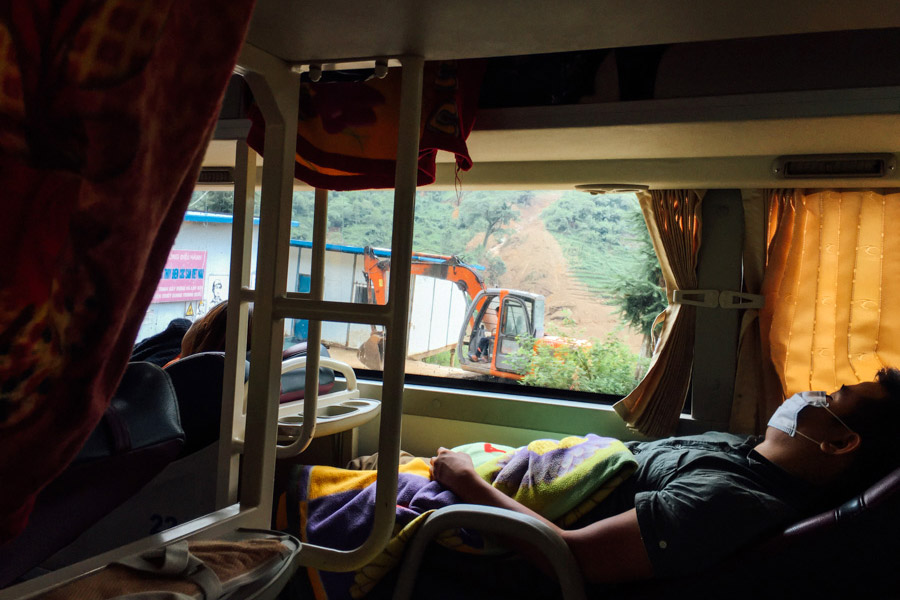

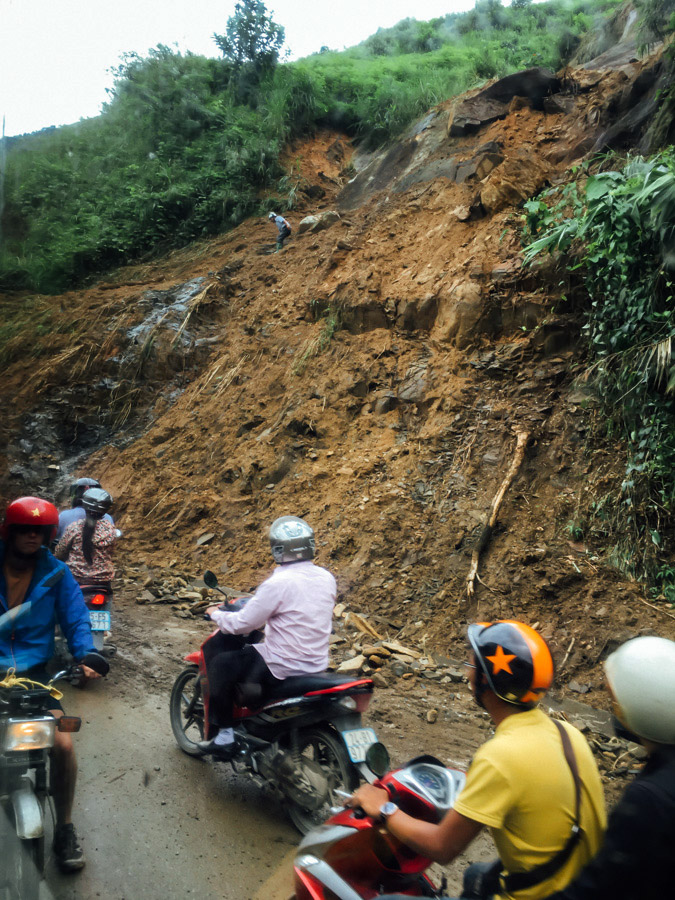
We will spend the rest of our day with our favorite activity, roaming around the countryside on a motorcycle, stopping for iced coffee and to reminisce on a beautiful three days, finding ourselves lucky to have skipped Halong Bay. Meeting and spending time with people was always more important to us than seeing limestone, and here, in this beautiful valley of Northern Vietnam, we met the beautiful people of Sapa O’Chau, the Red Dao family of our homestay, and our new dear friend, Pế.
Sapa treated us with its picturesque valleys and quiet beauty; it showed us another side of Vietnam, one of the mountains and far from the country’s busy motorcycle-packed streets and sidewalks. It’s been a month since we landed in this country, in Saigon, the capital of South, which lost the war to the North. We have seen many faces of Vietnam: we found new uncles and friends, and met old ones; we indulged in cheap delicious food at every stop, with local beer to wash it down; we met students who wanted to speak English and learn about the US; we caught a glimpse of propaganda at Ho Chi Minh’s mausoleum. It’s time to head back to Hanoi for a few days before the next country. We walk through the old town where streets are named after what is sold there - maybe this is “Restaurant Supply Street”; this one must be “Keys and Locks Street.” We stop for more Bún Chảs and Bánh Mìs, for one last Hanoi beer and random delicious soup on a small red stool, for a final Chè. We haven’t left and already miss the best food of our trip, the perfect balance of spices, fresh herbs, heartwarming broths, and succulent meats. We walk lazily, thinking of nothing and of everything our trip has come to be. I realize this is the first country in SE Asia where people have learned to do nothing, to just sit at a terrace and drink Vietnamese coffee - finally some French influence. But daydreaming is dangerous - a scooter almost runs over me. It’s time to leave the heat and humidity of SE Asia and head to China.






















